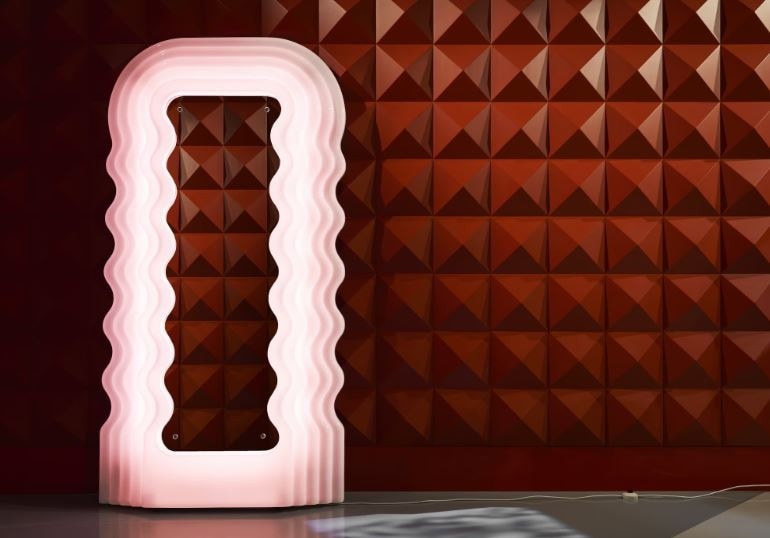by Giovanni Comoglio
Beyond all predictable and irrelevant revivals, it seems at any rate impossible or at least forced to find any connection between a Float armchair from the 60s, a sofa by Zaha Hadid and a lamp-strip by Formafantasma. Still one, multifaceted, branching connection exists, made up of all the eras, emergencies, and trends layered within the objects with which Italian and international design has filled homes, streets, individual spaces and shared spaces. In more than 60 years, Salone del Mobile with its event offspring has represented all these eras, emergencies, trends; and Domus has always been there to narrate, criticize, analyze and deconstruct as many.
Stretches and stretches of reviews, previews, interviews, discussions, selections – even a dinner party – have carried out a double mission through the years: by the moment of their release, they aimed at orienting taste, thought, and purchases; but just a moment later, they would immediately crystallize new steps of history, like mosquitoes inside amber. And it is History we are talking about, collective history, far beyond our individual stories: history by objects.
After all, in the orgy of decluttering, the escapist craze about getting rid of objects that has monopolized today's mainstream – as much as it may seem to be fading away more recently – how could we seriously claim that history and stories do not depend on objects? If the existence of an entire discipline – material history – were not enough to convince us, we could then plunge back into the individual realm and think of that Kemal, Orhan Pamuk's character I often enjoy recalling, who collects and hoards all the objects touched by the episodes of his obsessive and suffering love -– from a crashed Chevrolet to cigarette butts – to collect them in a Museum of Innocence. Or perhaps we should think more of Pamuk himself, who then actually realized that museum, but that is another matter.
Moving from these questions, we embarked on the rather unlikely endeavour of identifying in our archives 50 objects that could be able to narrate more than six decades of Saloni, of Domus, but above all of history. The result is a partial landscape, in the two meanings that Italian language attributes to this word, parziale: partial because there is only a part of the whole design market is covered (the source was strictly the Domus archives, so, as it happens in the most important archives, very often objects that we would take for granted are actually missing); partial precisely because of this fact, because an archive is in itself a witness and product of a critical work, of a choice.
It is a product of the thousand different components that generate an era, just as objects are.
These 50 objects are therefore 50 stories, milestones of the Salone as either they debuted at the Salone, or their success was validated at the Salone – they might have been born just a little before and not so far away – or it was deemed necessary, on the pages of Domus, to prefer them, albeit outsiders, to the whole plethora of their colleagues who were instead exhibited at the fair, seeming however not to be incisive enough, at that moment, on issues that were recognized as priorities for the contemporary.
This is the main purpose of these objects, selected from our archive: to represent themes, issues that have from time to time shaped the present trying to show a way for the future. First of all that "thing" we call home, becoming an increasingly hybrid “living space”, deconstructed by radical design in the '60s, rearranged and staged in the '80s, disintegrated and atomized by the digital 2000s until it no longer had a physical connotation in the nomadic and virtualized millennium of the multiverse; what is industry, then, what is craftsmanship and what is art; and again, as the scale of the issues expanded to the global scale rather than the specific of the object, questions pushed to cross the walls of the Salone and the streets of the Fuorisalone to draw attention on social and environmental emergencies and changes, which objects had, and will have to, confront, in an increasingly close, and hopefully less and less toxic, relationship.
50 objects to recount the privilege of being able to interact year after year with the world of materia – hopefully beautiful materia, we already hoped 40 years ago, by the dawn of the “event” season of the Saloni – and above all the need and importance of always being able to embrace these objects and watch them grow from the privileged (and way far from responsibility-free) position of critical freedom.
01
Blow, armchair, 1967
De Pas, D’Urbino, Lomazzi
Domus 456 November 1967
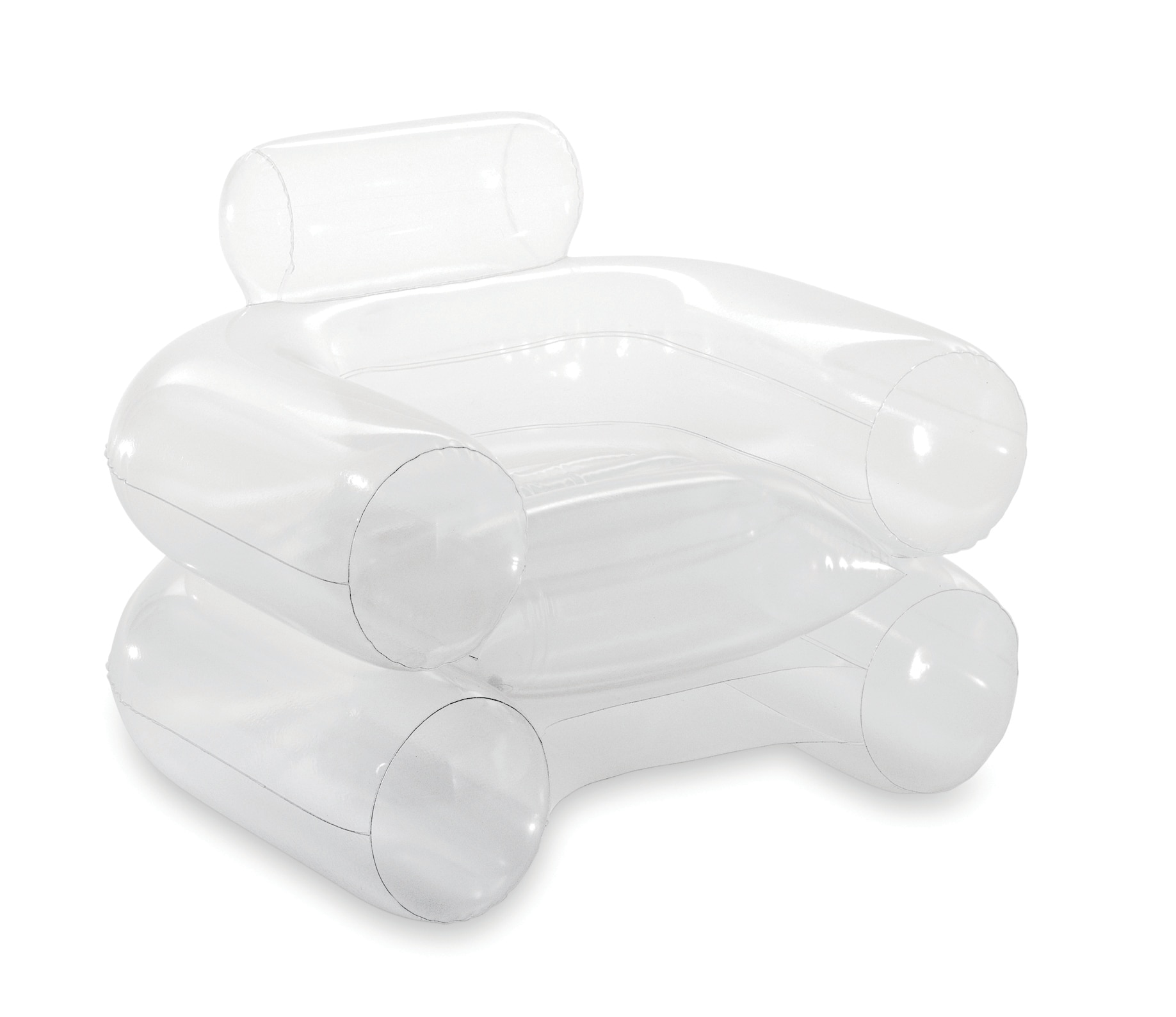
An armchair that breaks the molds but not the PVC membrane that defines the inflated chambers. Part and parcel of the experimental climate of the Italian radical design of the second half of the 1960s, the Blow project turns some of the most important and disruptive themes into an object – and armchair: the pop invasion and a playful approach to industrial design, the embrace of plastics as materials that can occupy the place we live in just like other “noble” and traditional materials, and the negation of a clear distinction between indoors and outdoors and of the fixed role of domestic spaces. Everything is living room, everything is grass, everything is pool, and Blow is the furniture for all spaces.
Opening image: courtesy Zanotta
02
Sofa “without measurements” (Lombrico), 1967
Marco Zanuso
Domus 456 November 1967
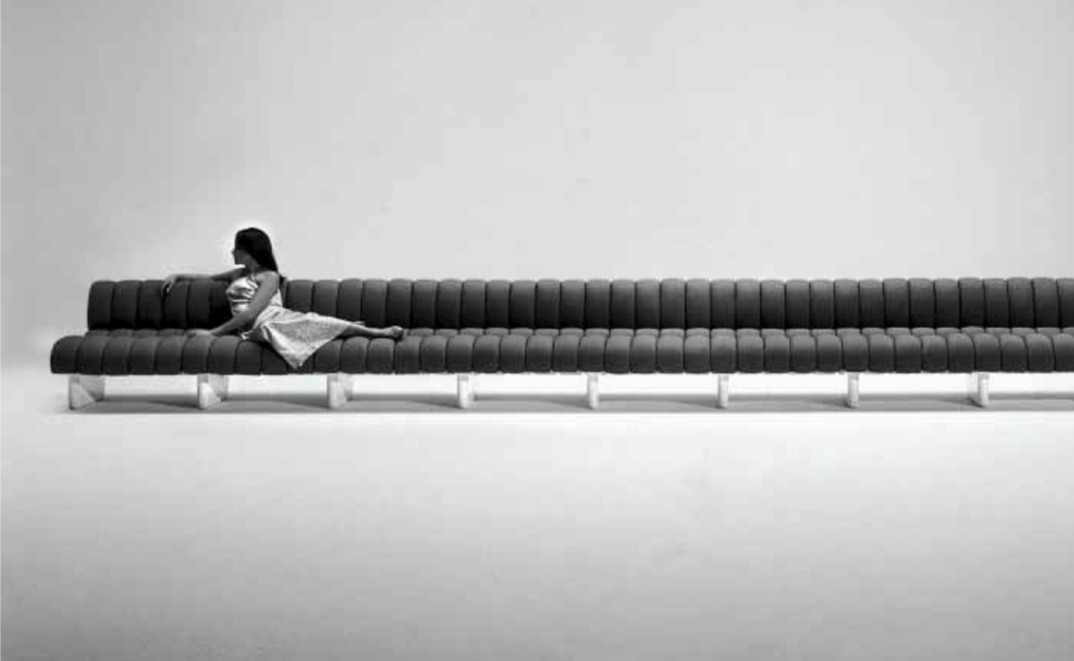
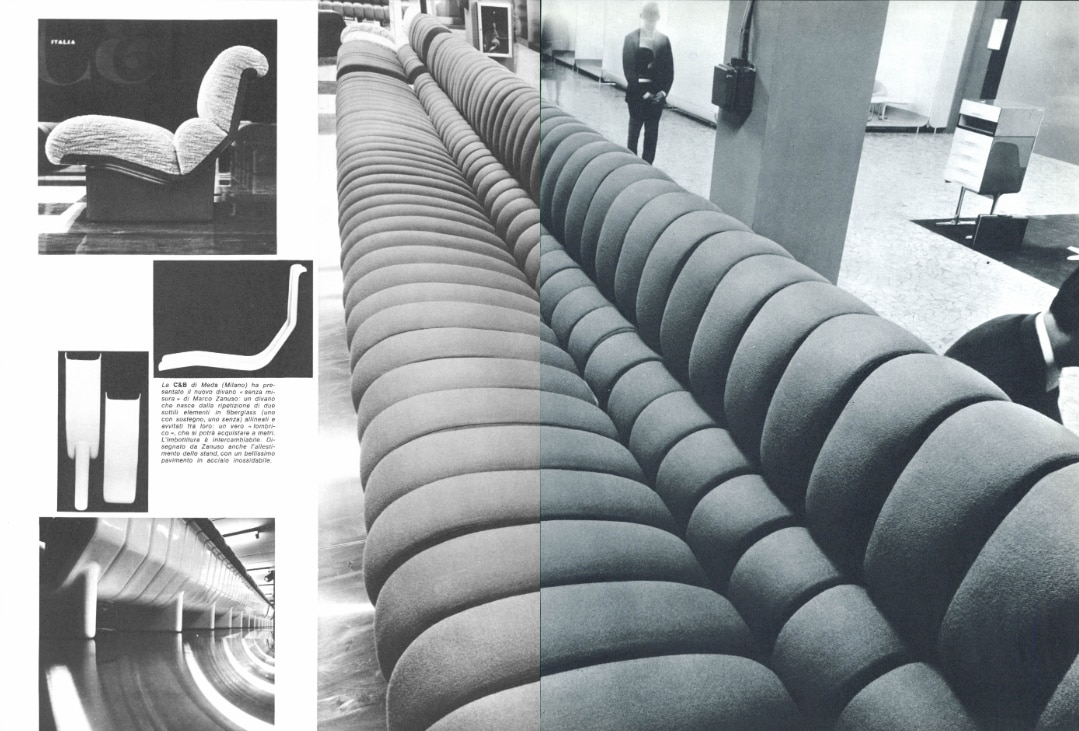
It was officially presented during the complex 1968 Triennale and it went down in history as Lombrico (“earthworm”), the modular sofa that could potentially become infinite. The company formerly known as C&B presented it at the Salone del Mobile at a stand designed by Zanuso himself with a stainless-steel floor that created a game of reflections and distortions with the sofa – the full expression of the visual identity of that period. The modules have a fiberglass structure and a soft seating element made from polyurethane; it was created for both domestic and public spaces, opening to a new season of experimentations where the Serpentone (“Big Snake”) by Cini Boeri for Arflex found its perfect fit.
Opening image: from Domus 866 January 2004
03
4867 “universal” chair, 1967
Joe Colombo
Domus 456 November 1967
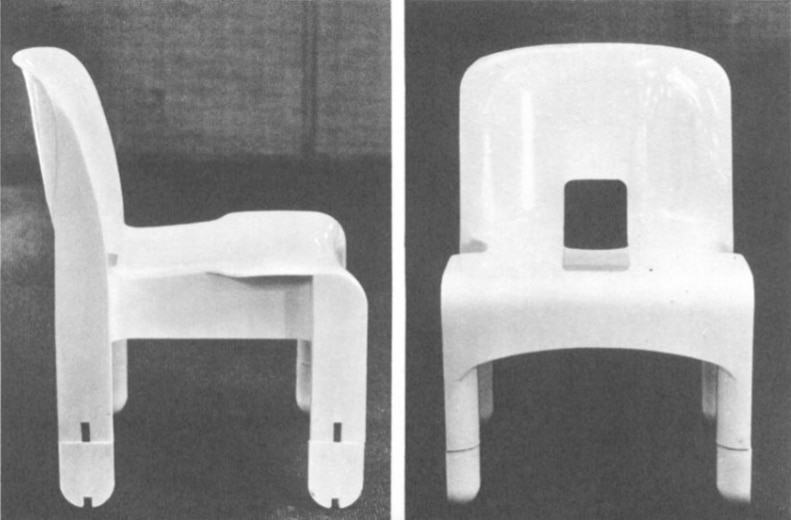
In 1964, the designer behind a chair entirely made in plastic is once again Marco Zanuso, but his K1340 is a small chair for kindergartens and elementary schools. However, in 1965 Joe Colombo started to design what two years later debuted as the first plastic chair for adults made through the process of injection molding: it is “universal.” Destined to mass production under the spirit of democratic design, its legs are shaped starting from a cylinder which is then cut along the vertical axis to allow the chairs to be placed one next to the other, the central hole guarantees air circulation, fluids outflow, and allows to chair to be easily grabbed and moved.
Opening image: from Domus 456 November 1967
04
Mies, chair, 1969
Archizoom Associati
Domus 480 November 1969
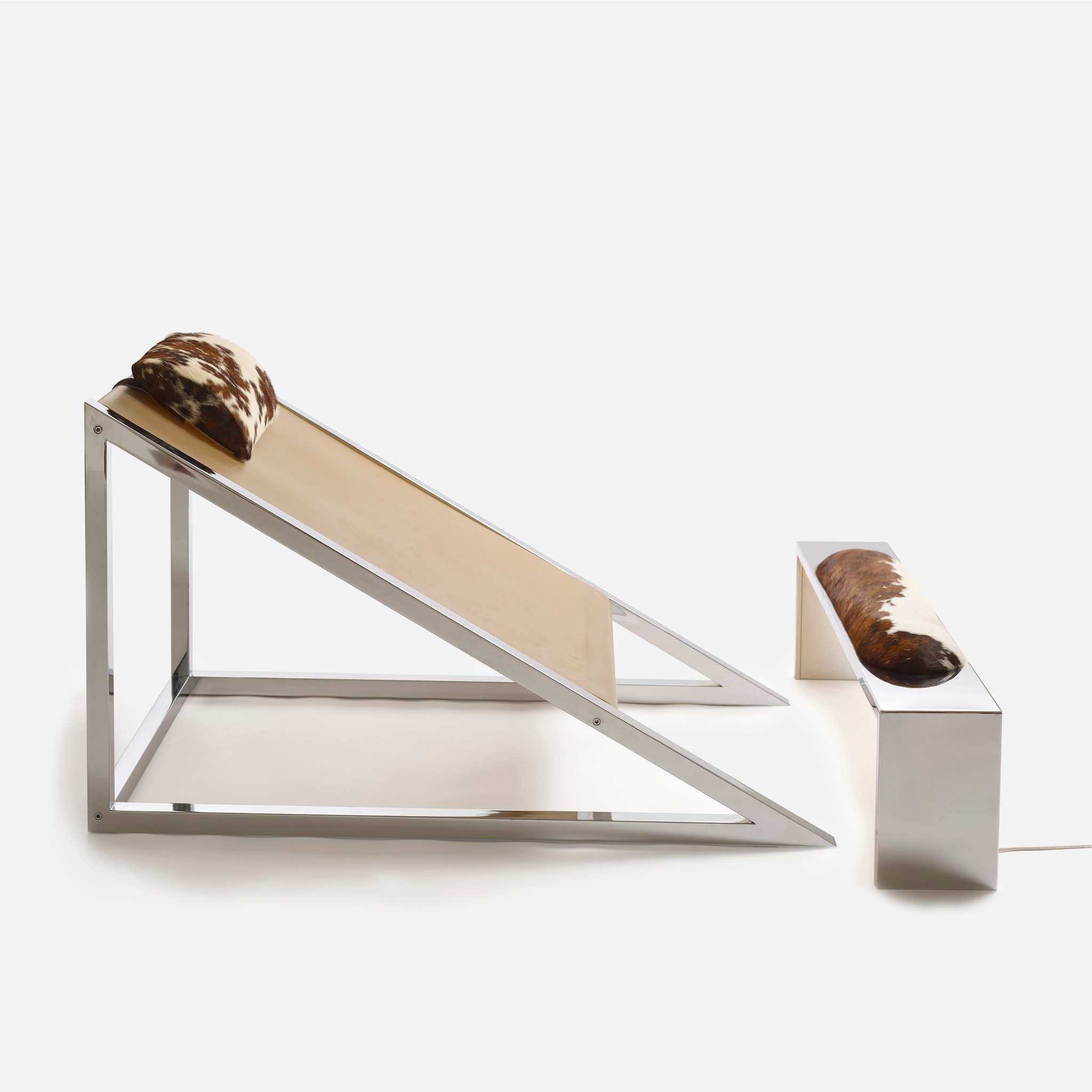
In 1969 Ludwig Mies van der Rohe died, and the Tuscan group Archizoom Associati, leading figures of the Italian radical design, homaged him with a chair for Poltronova that echoes Mies’s rigorous lines and structural expressions. But it was not a mere tribute: the chair is a sheet of stretched, two-dimensional para rubber, abstract like the shape of the chair itself and its prismatic structure in chromed metal. The rubber sheet is molded by the shape and weight of the person sitting on it, just like the image of Sergio Camilli, founder of Poltronova, posing for Ugo Mulas at the Salone del Mobile. Geometry and pop, metal and elastic materials, and then once again pop notes in the headrest and footrest cushions in pony hide, the latter placed on a small chromed and luminous footrest, the same dystopian-animalier touch of the leopard of the Safari sofa realized with a fiberglass technique the previous year.
Opening image: courtesy Centro Studi Poltronova. Photo Pietro Savorelli
05
Up, 1969
Gaetano Pesce
Domus 480 November 1969
At the end of the 1960s, it was the new emerging figures of the Italian industry who started to lean towards approaching entities that lay between design, architecture, and arts, that were subverting the shared canons of the time. The Up collection (a chair and a pouffe that became icons and received the Compasso d’Oro career award in 2022, and a sofa) was designed by Gaetano Pesce in collaboration with the research center C&B and it gathered objects made with experimental materials, allusive shapes with a postmodern echo, and the artistic style of the non-repeatable Happening. Defined “the biggest surprise of the Salone del Mobile” by Domus, Up literally “comes out” of the packing materials which reduce its volume by nine tenth, and once removed from it, the chair structure in polyurethane and covered in a stretchy fabric expands, taking its characteristic shape.
Opening image: from Domus 480 November 1969
06
Sedilsasso, pouffe 1969
Piero Gilardi
Domus 480 November 1969
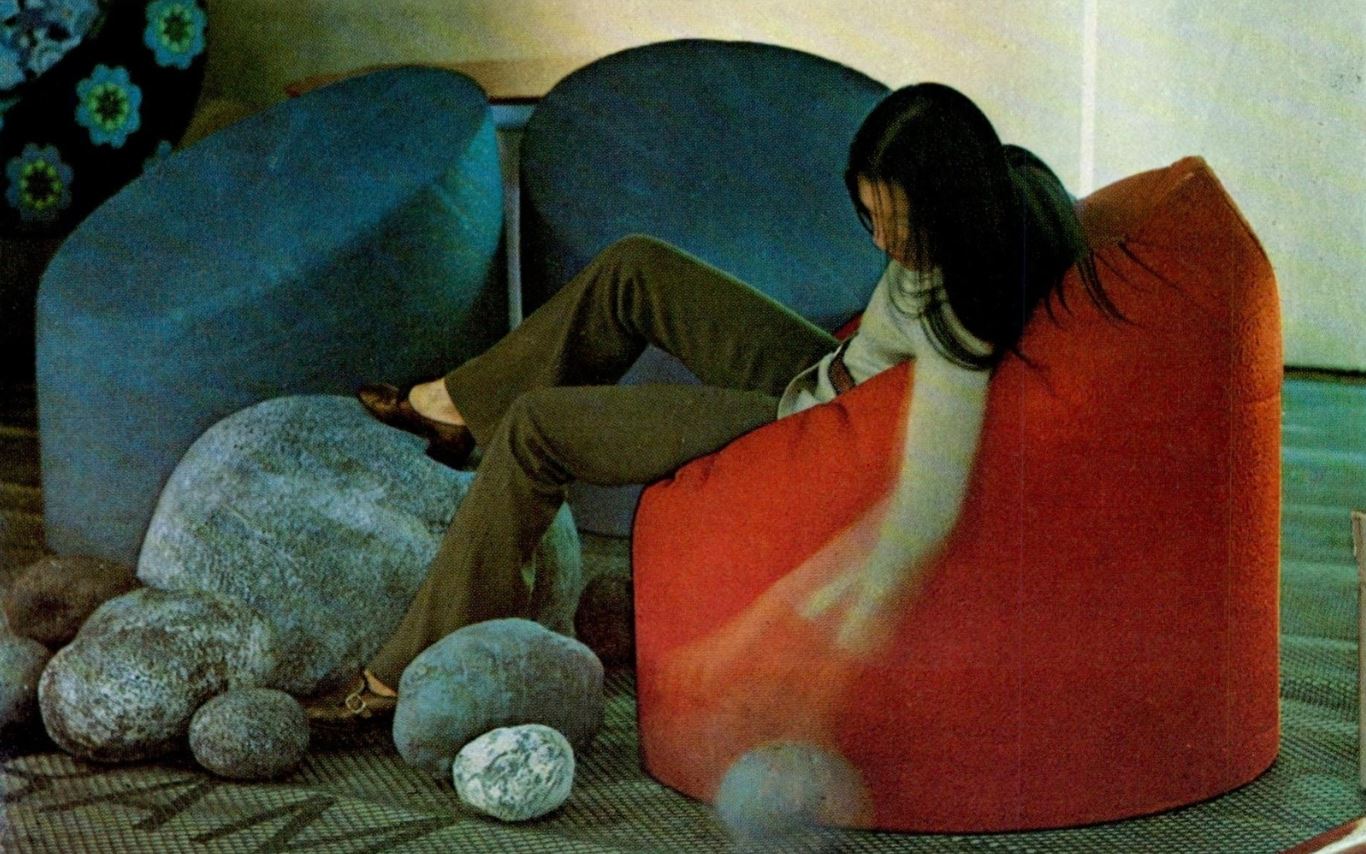
From its earlier expressions, the art of Pietro Gilardi is a critical reflection on the relationship between society, production, and nature: starting from the late 1960s, the Tappeti-natura (Nature-Carpets), walls of vegetation completely made in polyurethane, have been exposing the ambiguity of this relationship. A figurative device that found its field of action in design thanks to its material surprise which translated into big rocks, also made in polyurethane, which, against any semantic-ontological logic, are soft and stretchy. The Sedilsasso expanded the catalogue of the various products of Gufram, which were all on the edge between the conceptual scope of the industrial design object and the reproducibility of the work of art.
Opening image: from Domus 480 November 1969
07
Plia, chair, 1967
Giancarlo Piretti
Domus 480 November 1969
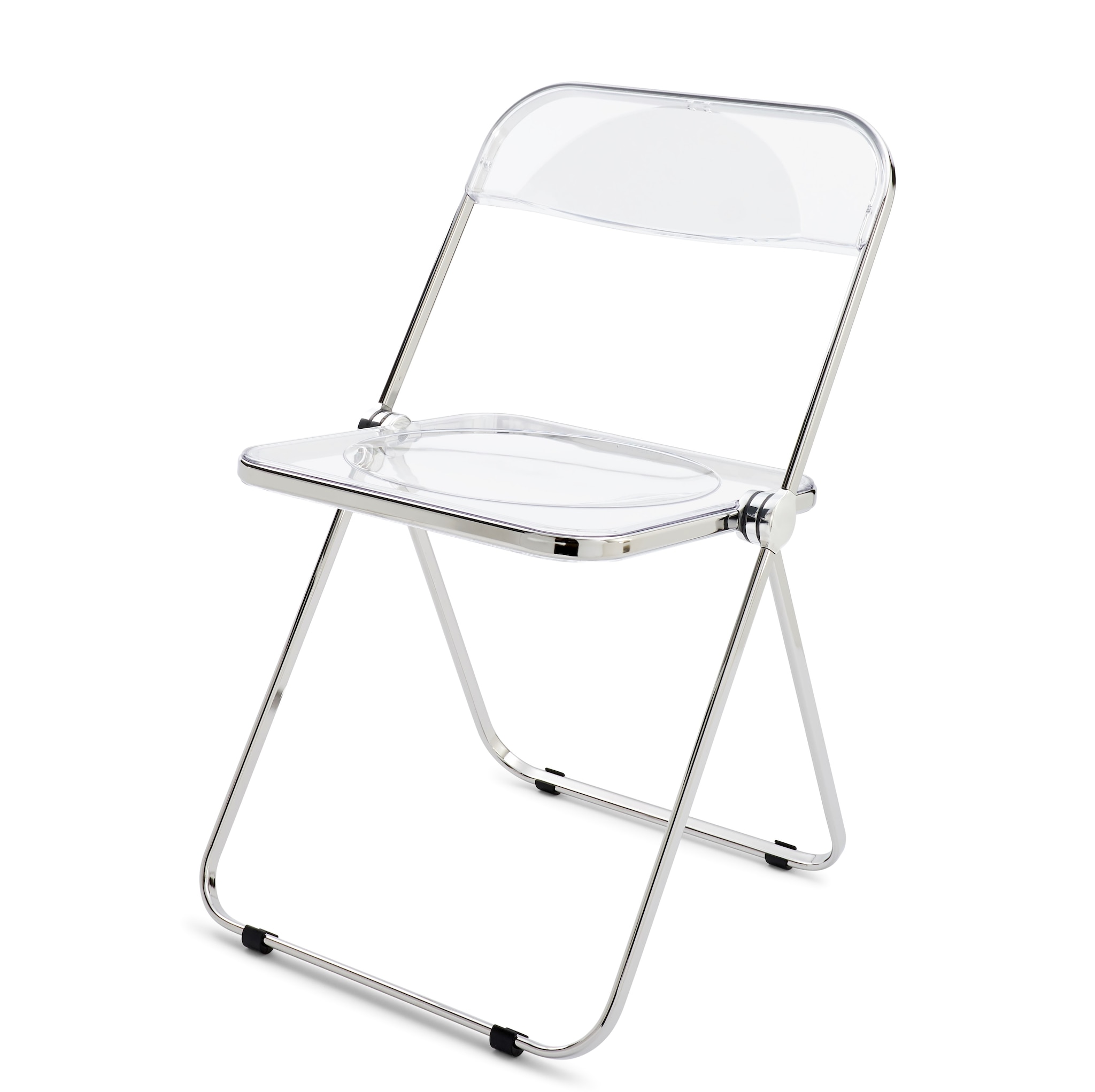
At the 1969 Salone del Mobile, Anonima Castelli’s stand celebrated and confirmed the smashing success of the folding chair with which, two years before, the young designer Giancarlo Piretti went down in history along with his three iconic intuitions: structural and visual lightness thanks to a chromed steel frame with the characteristic seat and backrest in transparent acetate; overall low costs of the project, which made its price what – at the time – could be defined democratic; “three-disc” hinge mechanism, which allows the three separate frames to be managed as a single element.
Opening image: courtesy Anonima Castelli
08
Parentesi, lamp, 1971
Achille Castiglioni (from an idea by Pio Manzù)
Domus 492 November 1970
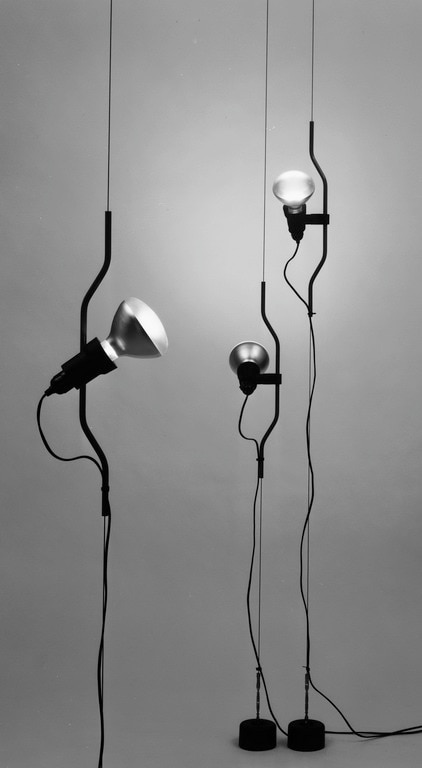
Castiglioni's approach always started from a functional reflection, which has nothing to do with technicality or its aestheticization: it was rather about the study, the intuition of a behavior, of a phenomenon capable of generating form. Sometimes it was the behavior of an existing object, such as the car headlamp of the Toio lamp; here, it was the interaction between an initial idea – the height-adjustable light on a stem – and a physical phenomenon – friction – that created an unprecedentedly long-living icon with several reissues, made of two fixed points (a joint and a counterweight), a steel wire and a bracketed metal tube capable of supporting the spot bulb on its rotating rubber lamp holder just by the friction generated by its shape.
Opening image: courtesy Fondazione Achille Castiglioni
09
Pratone, sitting piece, 1970
Giorgio Ceretti, Pietro Derossi, Riccardo Rosso
Domus 480 November 1969
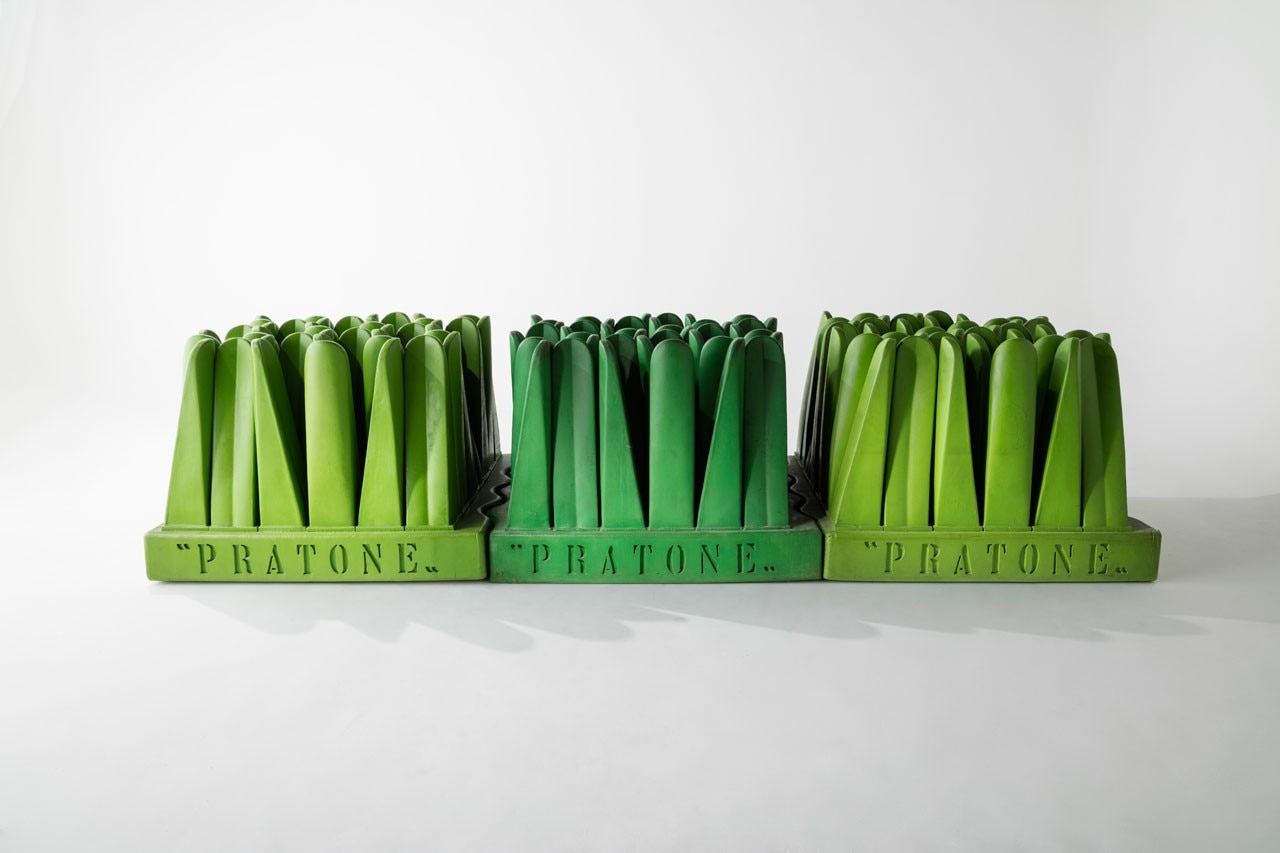
Ceretti, Derossi and Rosso had just won the "Sintesis Idea 70" competition with an “armchair” that in a very short time would leave such limiting identification to move towards the "icon" one, "multiple" at most, as it would be defined when joining the catalog of Piedmontese brand Gufram: made of a series of oversized polyurethane blades of grass, soft and elastic, it represented the connection between pop art and radical design, bringing the act of sitting and relaxing into the realm of playfulness and also denying all conventional interactions between people and the shape of domestic spaces.
Opening image: photo Adam Štech
10
Camaleonda, sofa, 1970
Mario Bellini
Domus 504 November 1971
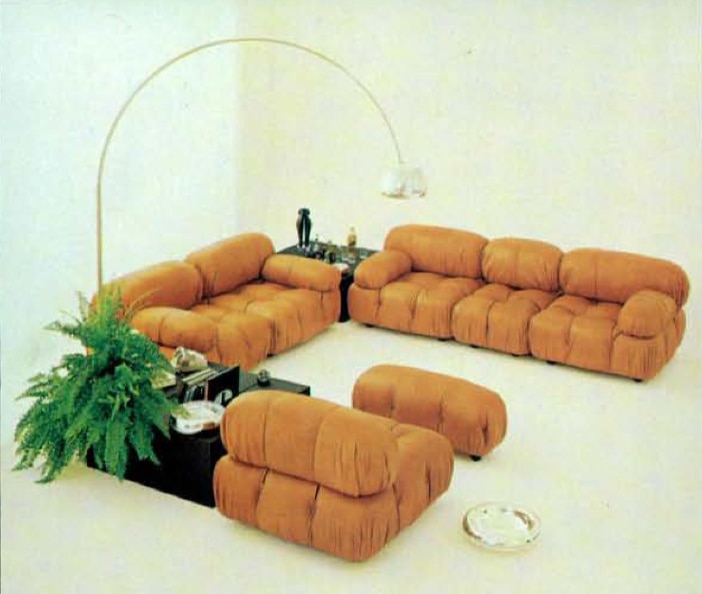
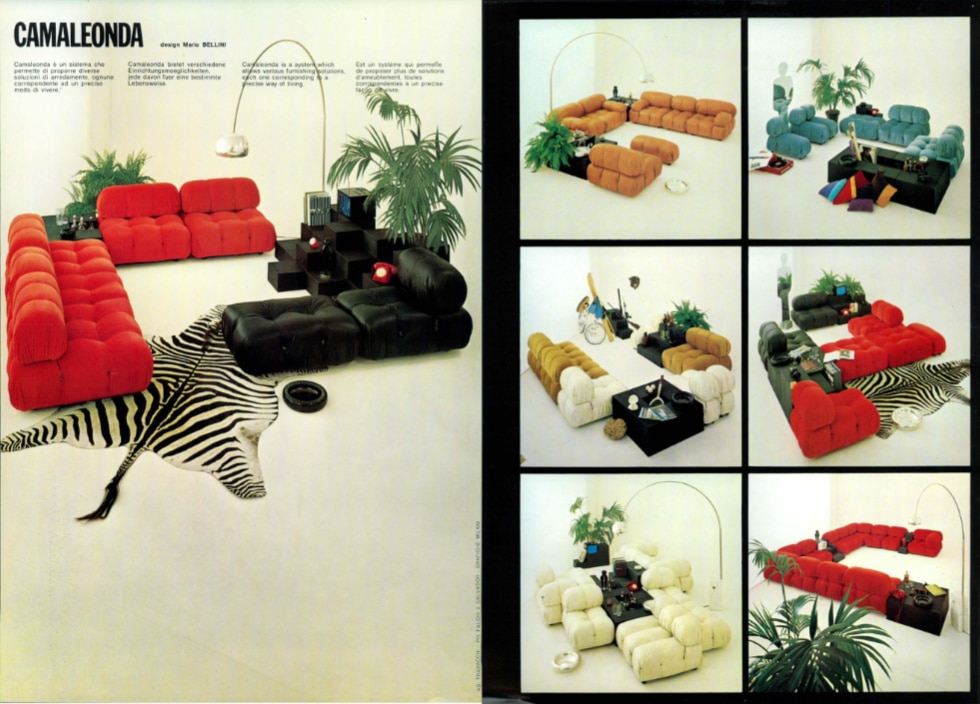
Mario Bellini’s sofas were a chapter of their own, and foundational, in the Italian domestic design and its visual scene of the early 1970s. Using the composition “polyurethane (with three layers of different densities) + fabric,” the sofa designed for C&B is a wave, whose curves accentuate its comfort and modularity, and it’s a chameleon, because it can adapt to spaces that are incredibly different one from the other thanks to the possibility of assembling the different modules (base 90x90cm), the cushions-backrests-armrests, and even box-like elements, that function as a support surface, in different configurations thanks to a hook system.
Opening image Domus 505 December 1971. Photo Falchi and Salvador
11
Le Bambole, sofa, 1972
Mario Bellini
Domus 504 November 1971
With Le Bambole, we burst into Postmodernism: amorphous but well-structured, this sofa for C&B, which Bellini initially would have liked to be a “bag” of material modelled by simply being placed on the floor, looks like a shape made of pure cushion moldable by the human body – an effect that is guaranteed by its polyurethane foam, polyester lining, and fabric or leather cover − while the steel tubular frame which dictates its main lines remains hidden. We entered Postmodernism in an explosive way thanks to the photographic campaign with which Oliviero Toscani launched the projects, which portrayed the model Donna Jordan, who was already an iconic Warhol star and Antonio Lopez’s muse, topless. At the award comeback in 1979, Le Bambole won the Compasso d’Oro.
12
Ultrafragola, mirror, 1970
Ettore Sottsass
Domus 528 November 1973
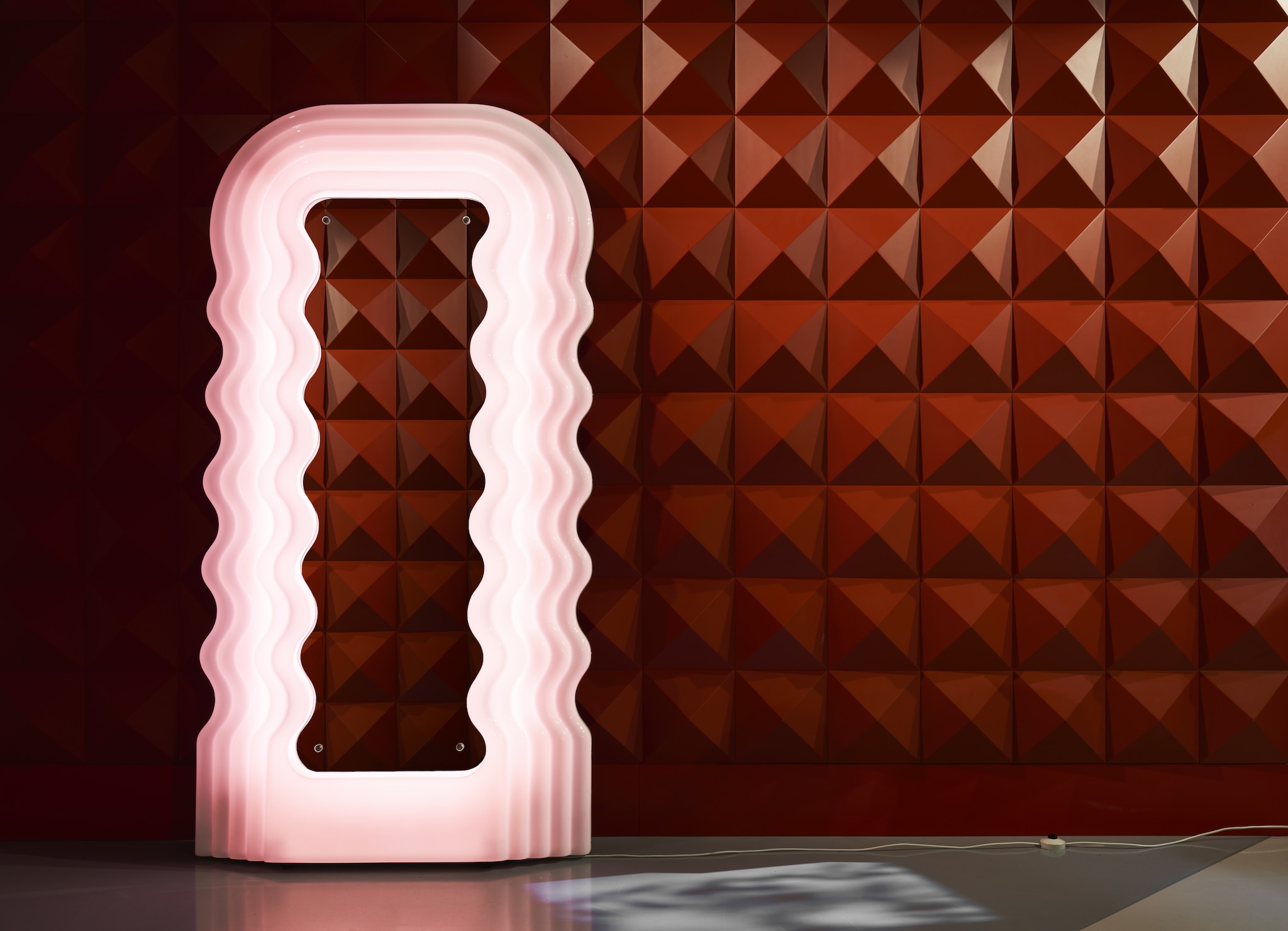
At the 1973 Salone, Poltronova's area represented a brand that was strongly identifying with the concept itself of radical design, as was Sottsass, author of all the pieces on display: a “radical living room” with tables, chairs, bookcases, totems and mirrors. One in particular, that had been presented along with the “gray furniture” series at Eurodomus in 1970, was the one to put its signature on the whole display, validating its identity. It was the Ultrafragola, with its backlit translucent fiberglass frame, inspired by a cascade of feminine locks. Today a shape sought after by anyone having a social account, by then Ultrafragola was the object that could confirm the cultural positioning of both a company and a design movement.
Opening image: courtesy Centro Studi Poltronova. Photo Pietro Savorelli
13
Vertebra, office chair, 1979
Emilio Ambasz, Giancarlo Piretti
Domus 601 December 1979
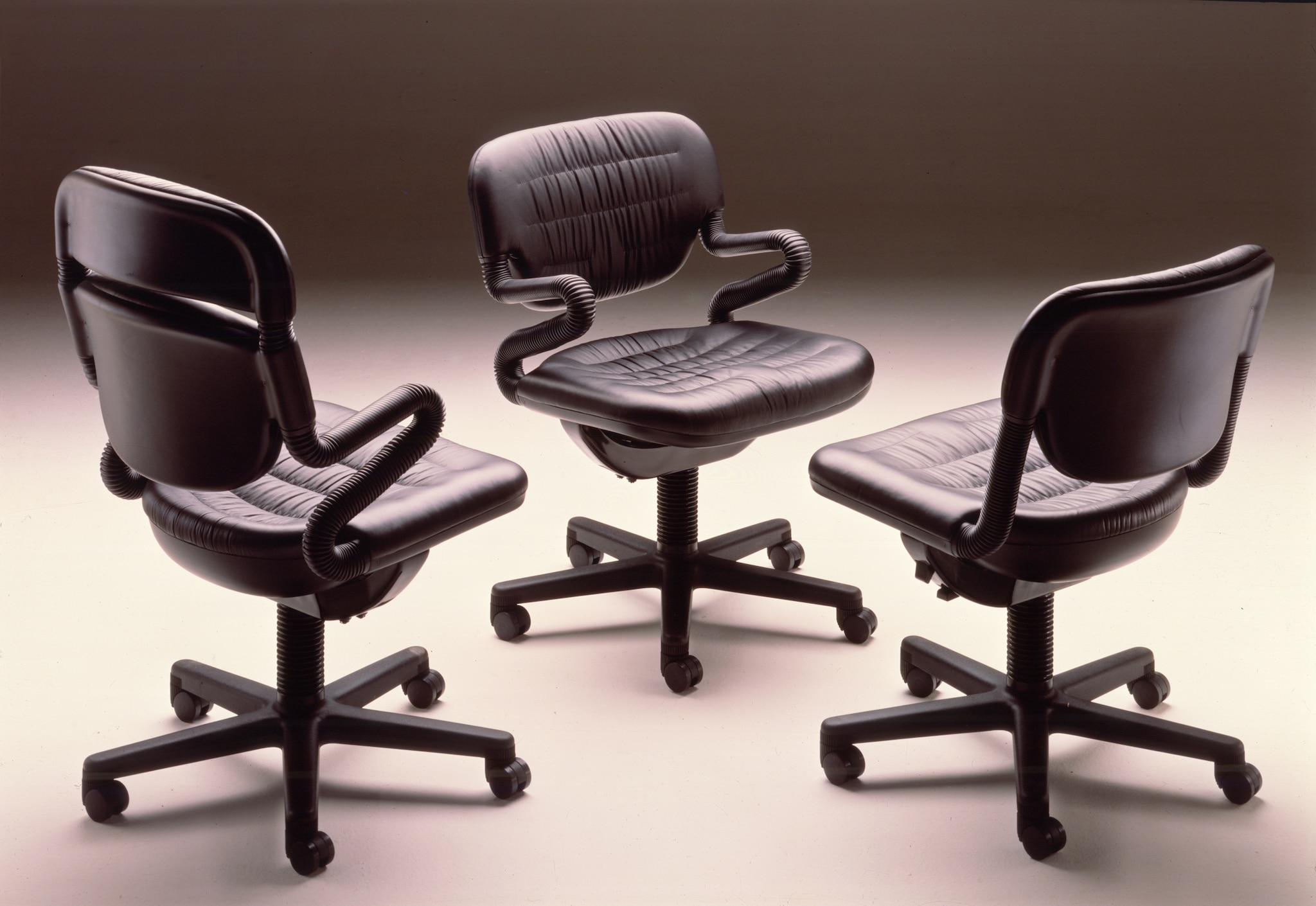
Designed by Ambasz and Piretti for Castelli, Vertebra not only marked the collaboration between the two designers and added another milestone in the brand’s production after the Plia chair, but it also marked a revolution in the way the office spaces and ergonomics were conceived: it was the first chair that adapted to the movements and the posture of those sitting on it, through a system of counterweights placed under the chair and in a flexible, continuous ribbed tube which, together with its ergonomic features, gives the name to the chair. Tommaso Trini wrote on Domus, “I like it because it is really an extension of the lower back and moreover is menacingly servile, just like any machine,” and the approval and success of Vertebra was validated when it was awarded the Compasso d’Oro in 1981.
Opening image: courtesy Emilio Ambasz
14
Cabina dell’Elba, wardrobe, 1980
Aldo Rossi
Domus 646 January 1984
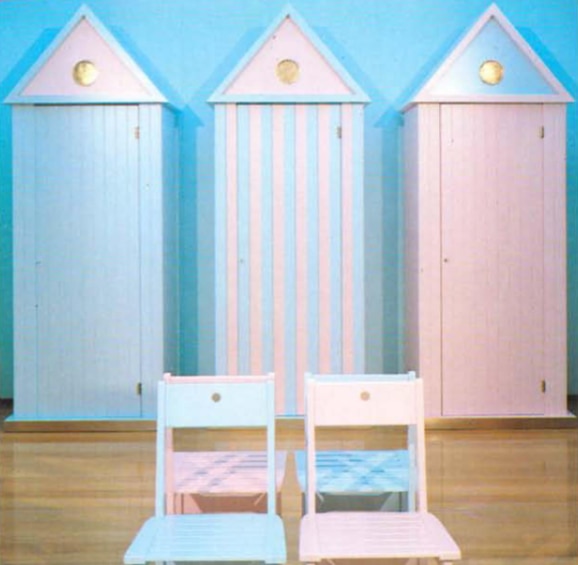
The wardrobe designed by Aldo Rossi as a prototype in four different models for Molteni in 1980 is probably the clearest example of his approach to design. Rossi started from his memory and then worked on the archetypes he found useful to break the borders of scales that are typical of design, conceiving domestic spaces as urban spaces in which buildings – of different scale – find a role and create new meanings. The beach cabin is the most archetypical and, at the same time, hybrid starting point, which brought the outdoors indoors, and the “house” into furniture. At the Salone del Mobile in 1984, Domus published Rossi’s designs for Bruno Longoni’s catalog, an atelier in Cantù, near Milan, which two years before started to produce the Cabin. As it had already happened with Tea and Cofee Piazza, or with the Conica coffee maker, the new pieces were other fragments of cities.
Opening image: form Domus 646 January 1984
15
Tawaraya, living room ring, 1981
Masanori Umeda
Domus 620 September 1981
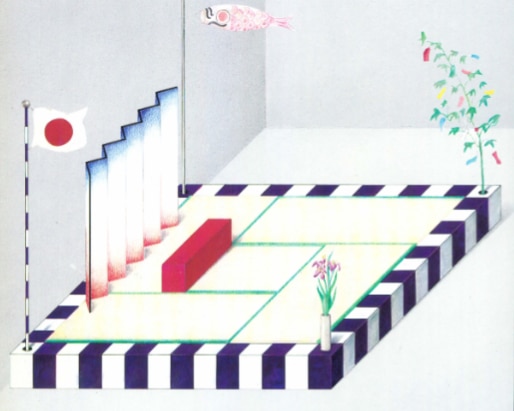
Even if it might not be evident to most, after the 1981 Salone del Mobile, things were not the same anymore: Memphis had, in fact, officially debuted. The group, established in December 1980 at Ettore Sottsass’s place, evoked the history and contemporaneity, the depth of the reference of high culture and the most enveloping pop, it had no intention to escape production and the market, and it had unparalleled influence on the visual trends of many generations. The most famous photo is probably the one that portrays the group on a very peculiar ring: the ring designed by Masanori Umeda, in woven straw, metal, and lacquered wood, full of silk cushions. The object is an icon of the first collection, which debuted during the Salone del Mobile.
Opening image: from Domus 620 September 1981
16
Gibigiana, table lamp, 1980
Achille Castiglioni
Domus 620 September 1981
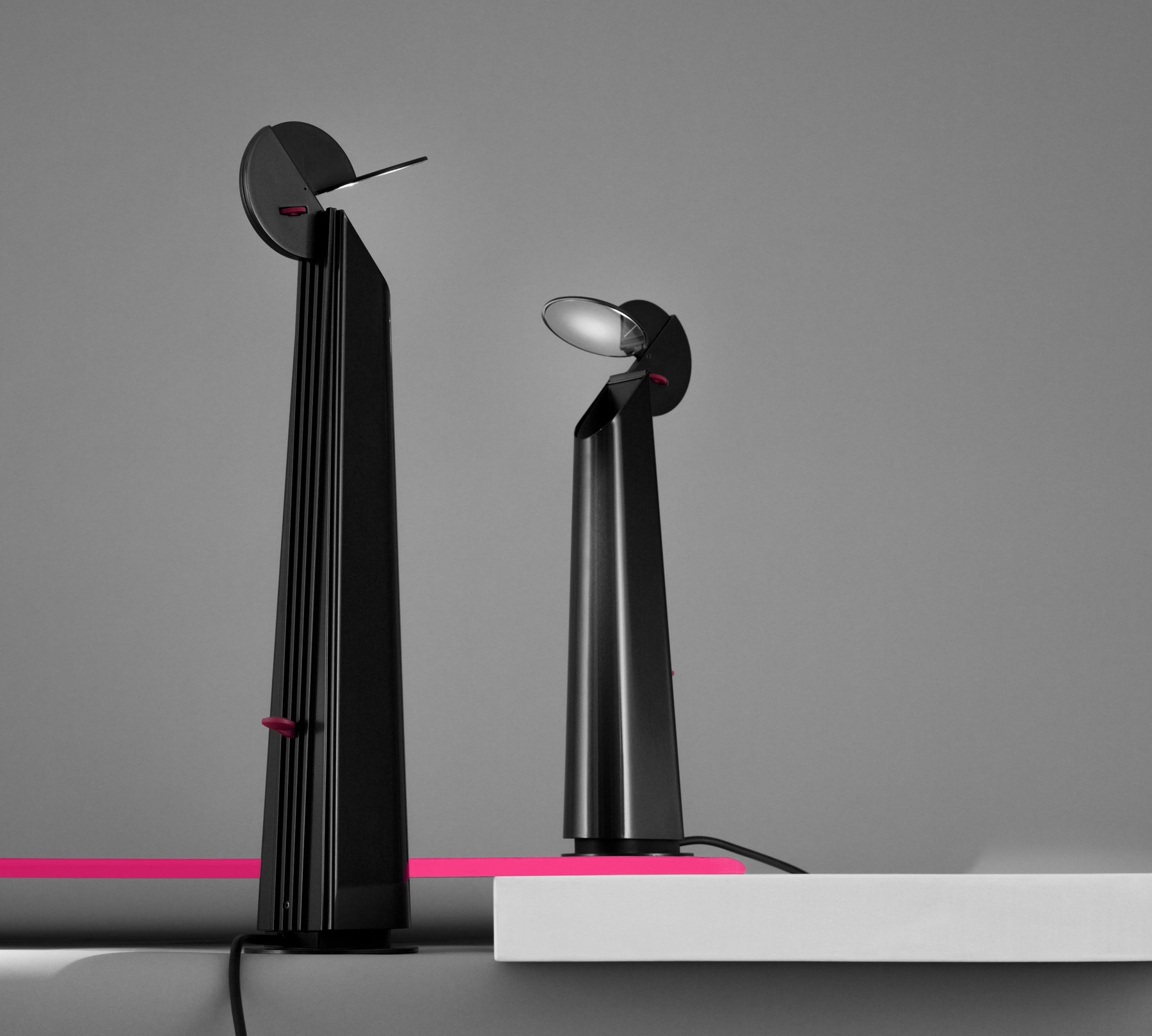
“To be a Gibigiana” means to reflect a sun ray onto something, maybe someone, with any object capable of reflecting. Once again, without following any trend of the spirit of the time, Castiglioni’s approach was to study a phenomenon, a behavior, and make it the basis of a project. In Gibigiana, designed for Flos, the light coming from a light source hidden behind a steel case, travels upwards and, at the same time, is covered and reflected by an adjustable mirror: in this way, two people can work on two different activities using a different light, in the same room and at the same time.
Opening image: courtesy Fondazione Achille Castiglioni. Photo Frank Huelsboemer
17
Mobile infinito, 1981
Alessandro Mendini and Studio Alchimia
Domus 620 September 1981
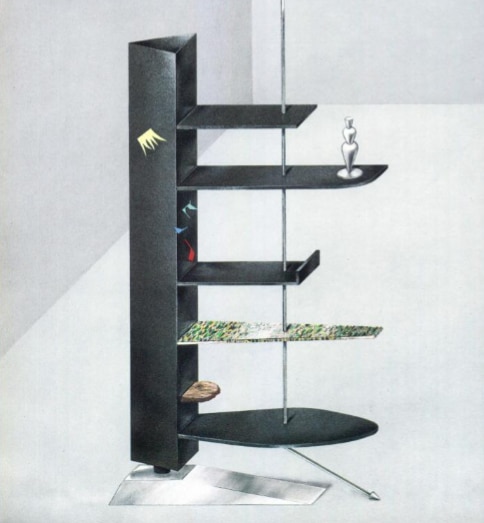
The two Italian entities acting as critical counterpoints to the status quo of industrial design in 1981 were the newborn Memphis, and Alchimia, founded in 1976 by Alessandro Guerriero. Unlike Memphis, Alchimia was not concerned with production and the market, exploring under the artistic direction of Alessandro Mendini – then editor of Domus – the terrain of redesign, of rethinking archetypal projects through the history of design. Memphis opened its first exhibition the day after Alchimia presented this potentially infinite system of additions, which various members, guests and trans-historical inspirations of the group operated on a given set of gray furniture: magnetic decorations by Mimmo Paladino and Nicola Demaria, a small architecture by Andrea Branzi, handles by Ugo La Pietra, a leg by Denis Santachiara, Abet magnetic laminates with designs by Ponti, Veronesi, Munari and so on.
Opening image: from Domus 620 September 1981
18
Sindbad, sofa, 1981
Vico Magistretti
Domus 620 September 1981
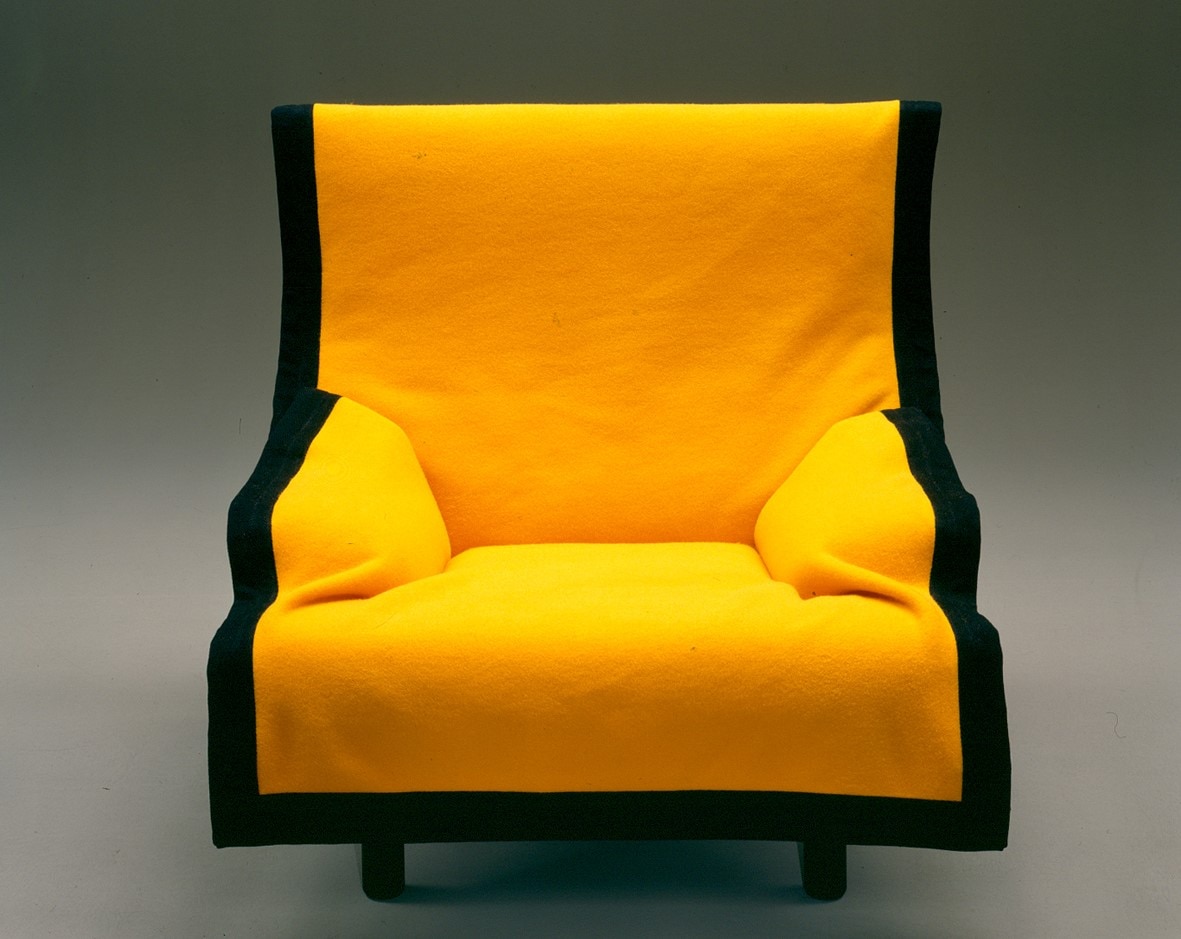
At the 1981 Salone del Mobile, there was even a sixty-year-old Magistretti, who once again broke the mold and, once again, he did so in a completely personal way. He started from a gesture, that of throwing a piece of fabric or leather on a sofa, and then made it into a “unupholstered sofa:” a frame made in black lacquered beechwood, steel, polyurethane foam, and polyester wadding on which one can decide which “blanket” – which was partially inspired by the horse blankets − to place on it, fixing it to the structure with buttons. The blankets can be chosen from a wide range of colors and materials, among which wool, cotton, linen, leather, and piqué. It was a wide, versatile, and convertible selection developed at first for Cassina and made of a sofa, an armchair, a pouffe, and a complementary coffee table.
Opening image: courtesy Cassina. Photo Mario Carrieri
19
Tangram, table, 1983
Massimo Morozzi
Domus 646 January 1984
The Postmodernism years were plunged in the evocative power of seemingly pure shapes and their combination in fixed configurations that are often unpredictable. This happens in the tangram puzzle, as it happens in the table Massimo Morozzi, co-founder of Archizoom Associati, designed for Cassina. It is a modular piece of furniture with different configurations of the seven elements: polychrome triangles, rectangles, parallelograms, and squares. One module can become a chessboard and bring together the figurative game with generations of stories and situations, like those created for the launching of the project by the illustrator Antonio Lopez, icon of Warhol’s New York and Studio 54.
Opening image: from Domus 646 January 1984
20
Traffic, sofa, 1983
Bruno Rota
Domus 646 January 1984
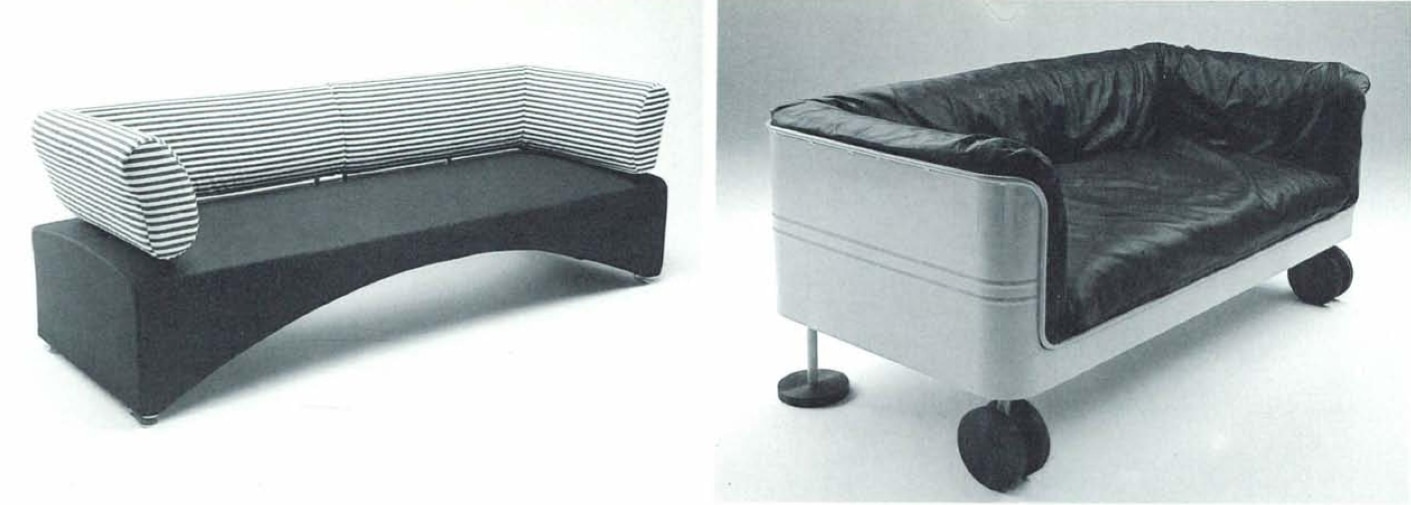
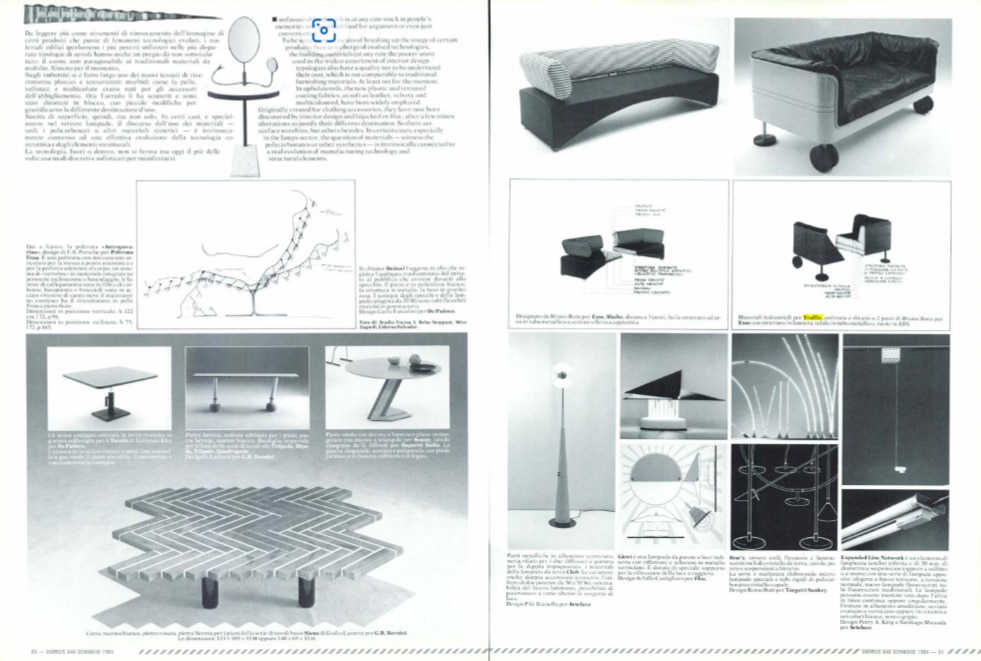
The language of the 1980s is a complex language, in which many other languages merge, which were seen as such for the first time in this period of time. This was the case of the industrial language, in its productive, plant, and mechanical components. In evolution to the poetic of Duchamp’s object trouvé (found object), of Mirò’s Surrealism and with the rise of Postmodernism, the industrial language became an aesthetic style, and its dual nature was represented by objects like the coffee table with wheels by Gae Aulenti. This sofa, designed by Rota for Esse, accentuates this language; it has big wheels through which it can be easily moved and that determined the aesthetic identity, together with the external frame in painted laminate that envelopes the leather-upholstered cushions. It was chosen for another iconic project of the time, the Citè des Sciences et de l'Industrie de la Villette in Paris.
Opening image: from Domus 646 January 1984
21
Diva, mirror, 1984
Ettore Sottsass
Domus 657 January 1985
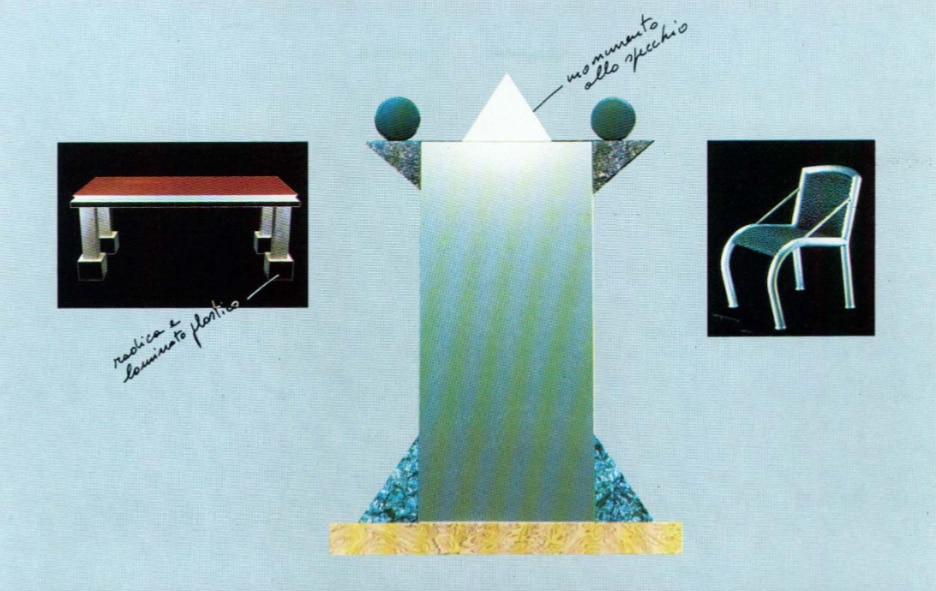
Once again a mirror, once again Sottsass, once again to represent the peak of a season, this time the heyday of the Memphis group which loudly debuted at the Salone del Mobile three years before (and that Sottsass left a year later). Diva has everything Memphis had to offer, it is just as representative as the Carlton and Magnolia bookcases, and it could almost be considered and archetype of the “Memphis-object.” It is totem-like, symmetrical, metaphysical, abstract, and at the same time playful in the way it puts together patterns and artificial chromatism on a fine wooden base covered with laminate, designed to cover as usual, dressed in something that is structural but not important to see.
Opening image: from Domus 657 January 1985
22
Quinta, chair, 1984
Mario Botta
Domus 675 September 1986
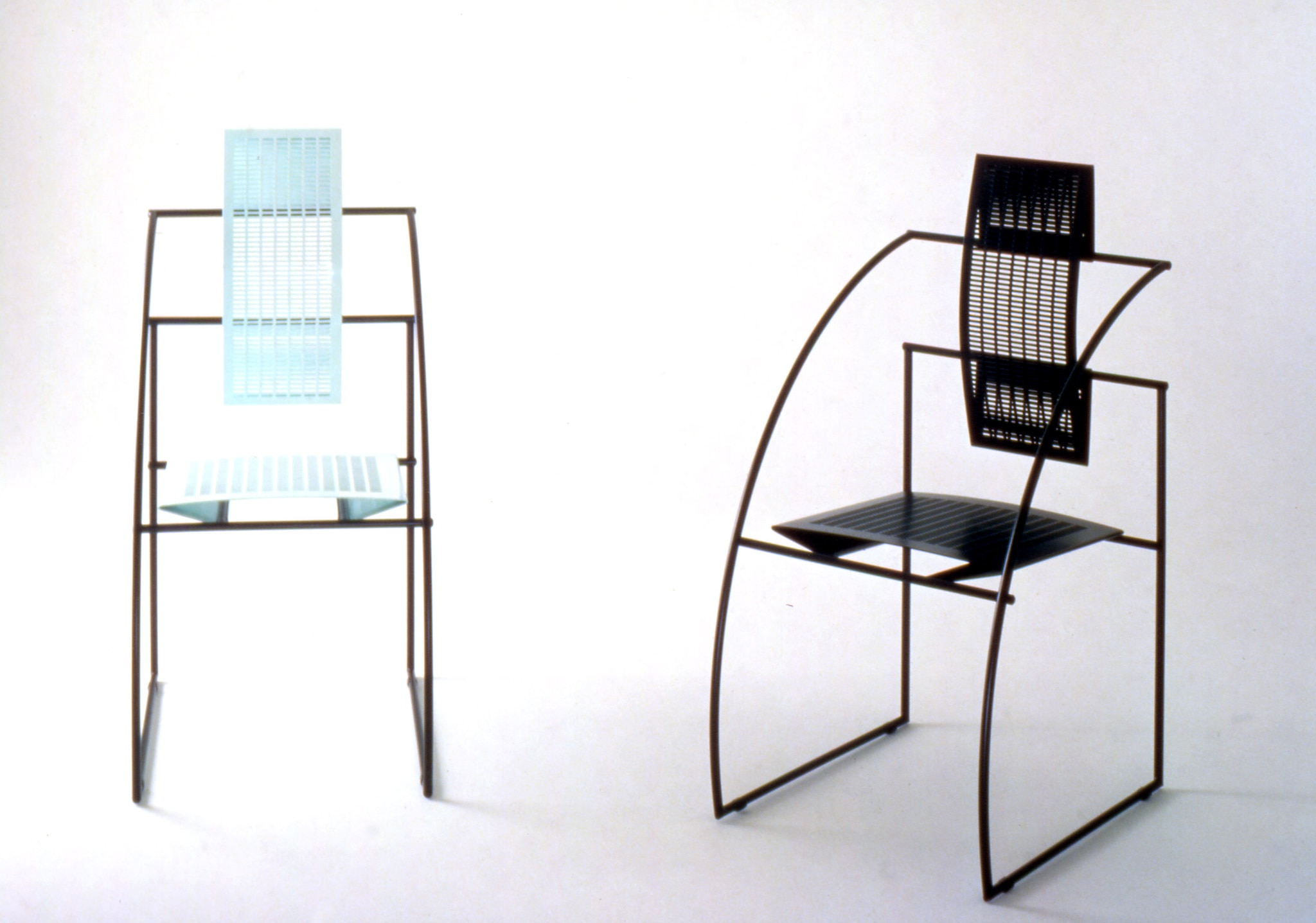
The 1980s discourse also included the debut of Mario Botta, the architect that joined the industrial design with the furniture that he designed for Alias starting from 1982. From this first series of collaborations, the Quinta chair is the only one that didn’t have the characteristic rubber roll backrest and better accentuated the fundamentals of the designer’s poetics, heirs to an international rationalism expressed through rational lines, materials, and functionality. The perforated, folded, and bent laminate sheets confer both an ergonomic and incredibly comfortable backrest and seat, sturdiness and flexibility of the metallic tube structure, and above all a unique visual identity to the chair that comes from its physical behavior.
Opening image: courtesy Mario Botta Architetti. Photo Aldo Ballo
23
Tippy Jackson, folding table, 1983
Philippe Starck
Domus 675 September 1986
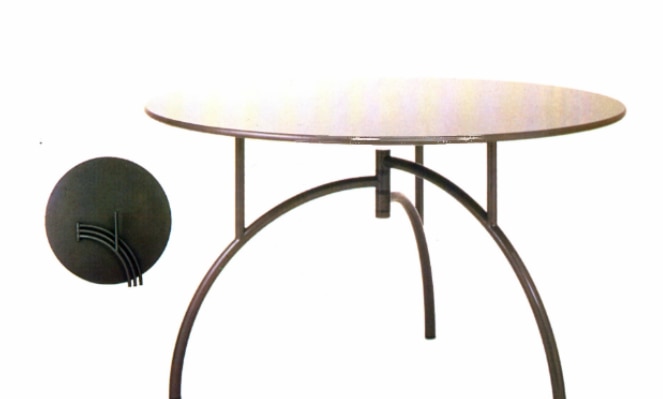
New names emerged through the 80s, and new ways of expressing the figure of the designer. Philippe Starck was one of the most relevant examples of such transition, towards an era where designers became “signatures”, with a specific attention to language that invested heavily in form so as to make it recognizable as an individual and authorial trait, as would happen shortly thereafter with the iconic Juicy Salif juicer for Alessi. By the mid-1980s Starck was affirmed in France with his interiors and early objects: the tables he made for the Ubik collection by Driade/Aleph had Bauhaus echoes but exploited the functional device of three arched feet, becoming coplanar once the table folded, to create an aesthetic language not shying away from decoration, pushing up to the realm of Art Déco.
Opening image: from Domus 675 September 1986
24
Costanza, lamp, 1986
Paolo Rizzato
Domus 675 September 1986
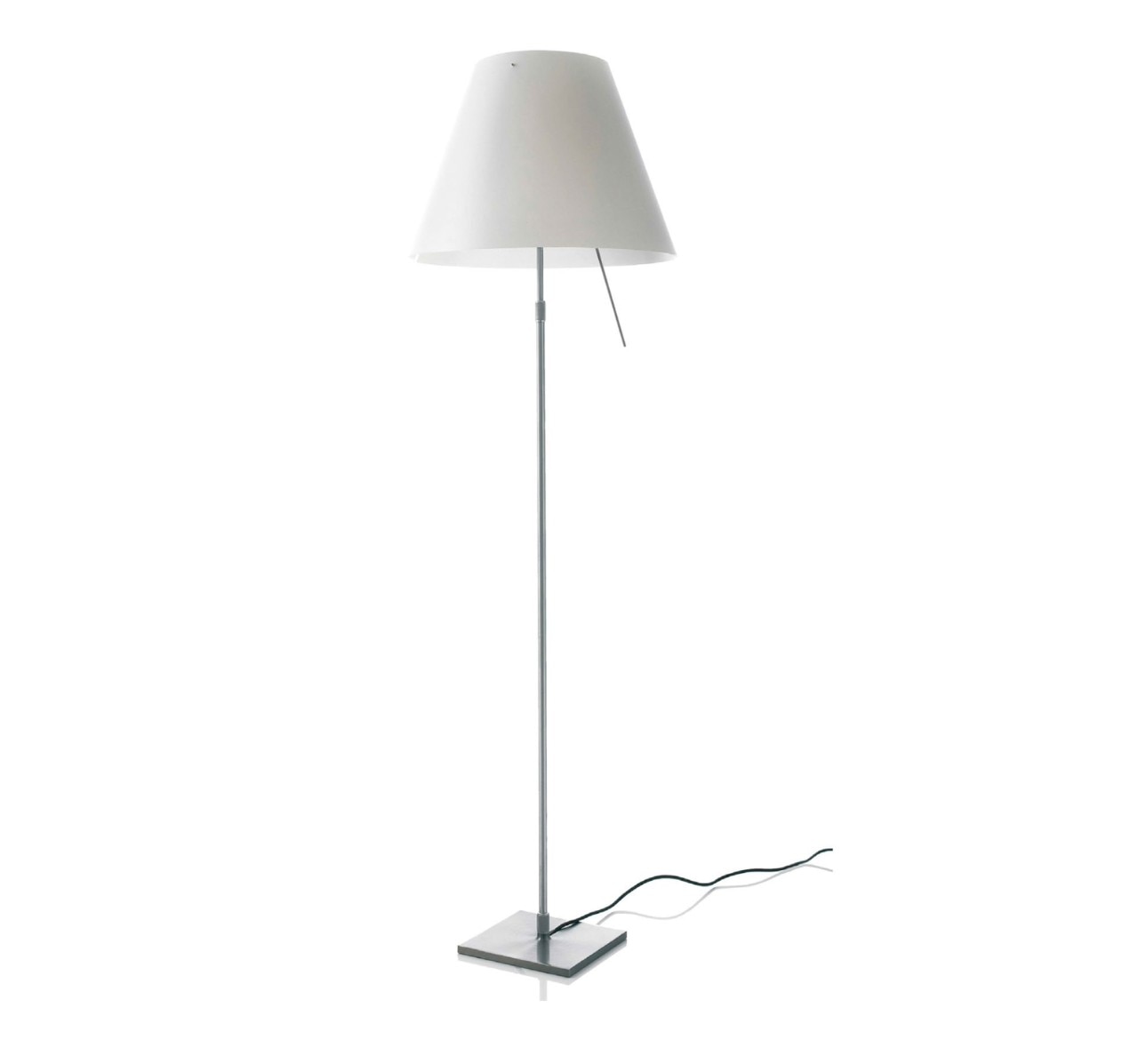
“While imagining this new lamp, I didn’t want to refer to a special lampshade, in focus in my memory, but to an atmosphere, a context that surrounds us, to the things we’ve all seen. This ‘undaunted’ shape interested me.” This is how Paolo Rizzatto described to Domus his collection of lamps with the evocative name Costanza, with which he opened a season of rethinking the archetypes of design and furniture. In this case, the traditional abat-jour is repurposed in its essential elements, as a polycarbonate lampshade with a truncated conical shape and an extensible aluminum stem. The variety of different declinations, supports, and attachments contributed throughout the years to creating a long-lived family of models.
Opening image: courtesy Luceplan
25
Feltri, armchair, 1987
Gaetano Pesce
Domus 686 September 1987
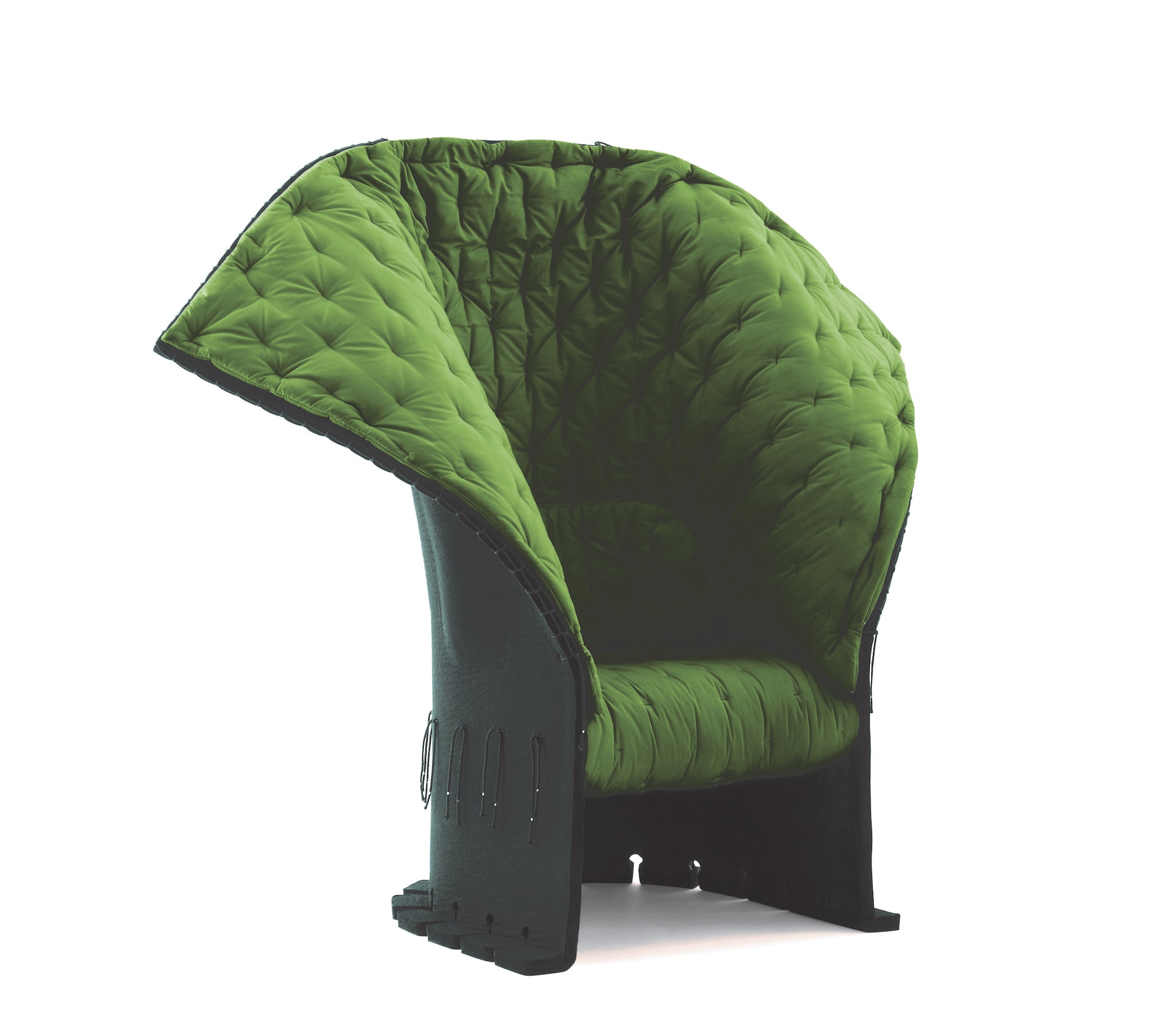
While commenting on these armchairs, completely made in fabric, even their structure, Marco Romanelli spoke of Gaetano Pesce as “the least ephemeral” person he had ever met, for the strength his projects had to permanently disrupt the status quo. Feltri were developed and patented at the Cassina study center by blending image, technique, and senses: a body in wool felt, stiffened with thermosetting resin at the bottom and moldable at the top, in order shape the armchair according to one’s preferences and create an enveloping blanket effect by combining the structure and internal quilt.
Opening image: courtesy Cassina
26
LightLight, chair, 1987
Alberto Meda
Domus 686 September 1987
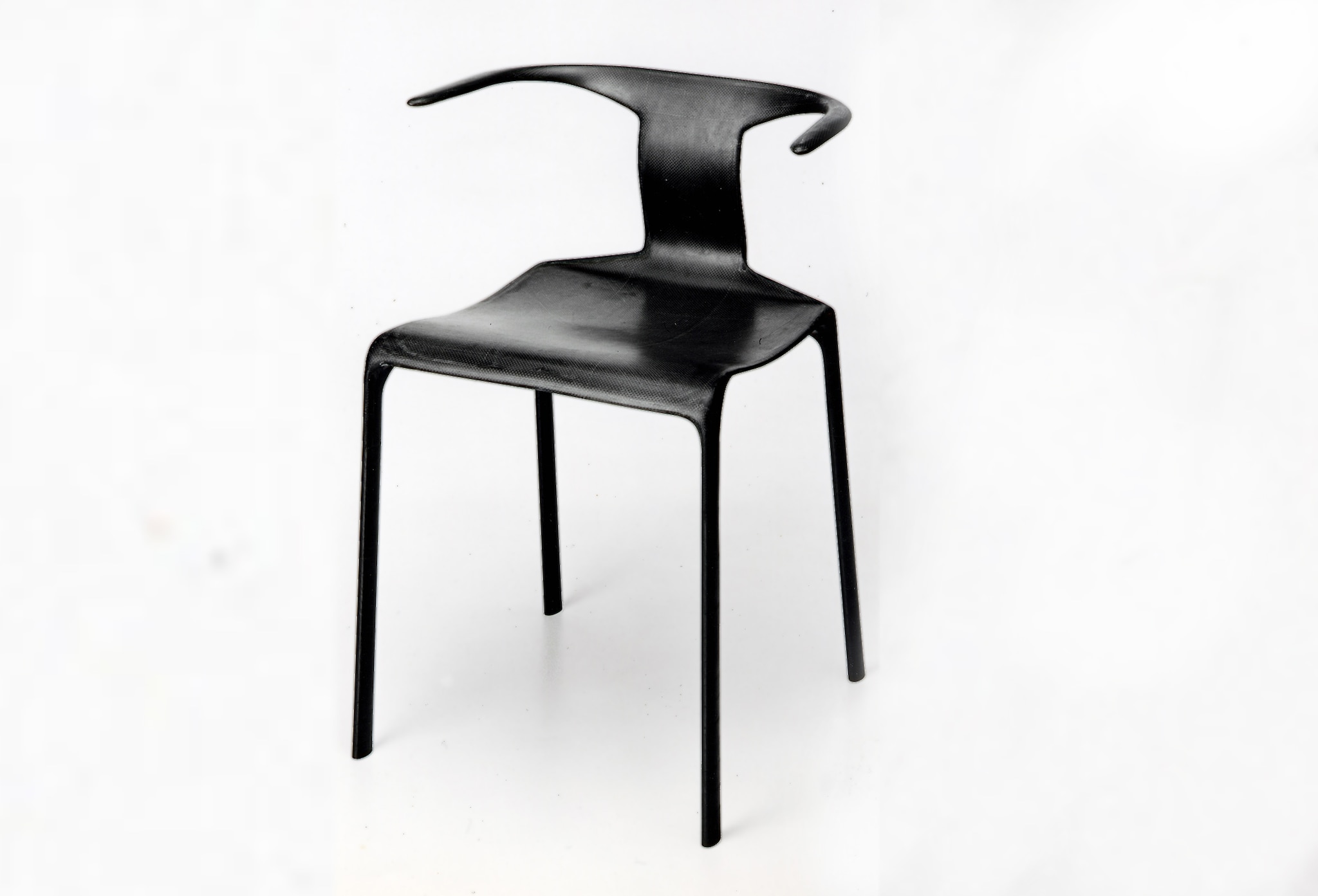
The chair designed by Alias represented another revolution in the way of thinking of the time, with respect to the relationship between shape, material, and image. It’s extremely light – it only weighs 1kg – and it also looks light and destabilizing to the extent that it seems to cross over the line ending up looking even too light, fragile; but it in reality this chair is the product of a study of the physics of materials and shapes that makes every centimeter of its honeycomb composite and carbon-fiber structure efficient and durable. It had an innovative design that seemed to be speaking a different language from its other peer pieces.
Opening image: courtesy Alberto Meda
27
Stainless steel seats, 19922
Ron Arad (with One Off Team)
Domus 741 September 1992
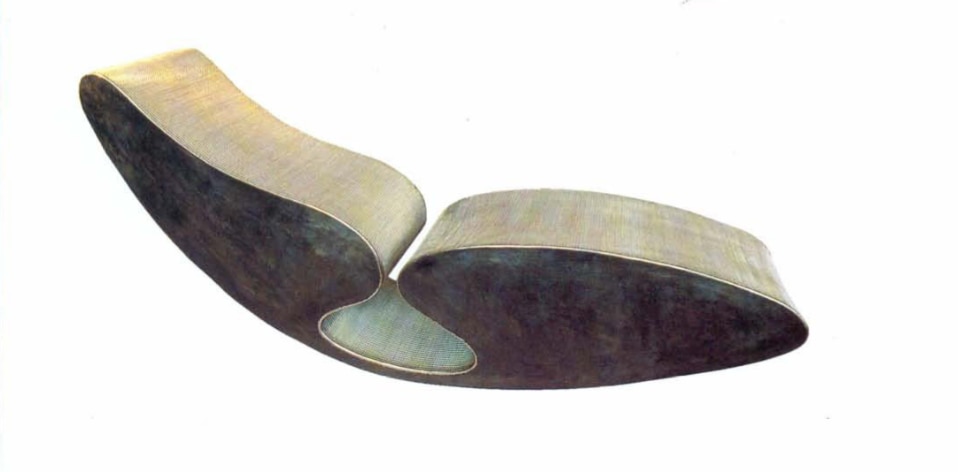
After exploring the elastic and expressive potential of the steel curved sheet and creating an icon such as the 1986 Well Tempered Chair, Ron Arad pushed on the accelerator of a topic that that project had already opened, the topic of braking through the boundaries between design and plastic art. Together with One Off, he developed a collection of pieces that reflected on formal expression starting from a common denominator: the continuous steel “fabric” and its sinuous variations, which negated the classical structures of the seats with frames, springs, and upholstery. Thanks to this, they deserved titles (No Duckling No Swan, Creature’s Comfort, Up like a bear etc.) which were just as fundamental as the pieces’ aesthetics in narrating their generative idea.
Opening image: from Domus 741 September 1992
28
Bottle, bottle rack,1994
Jasper Morrison
Domus 762 July 1994
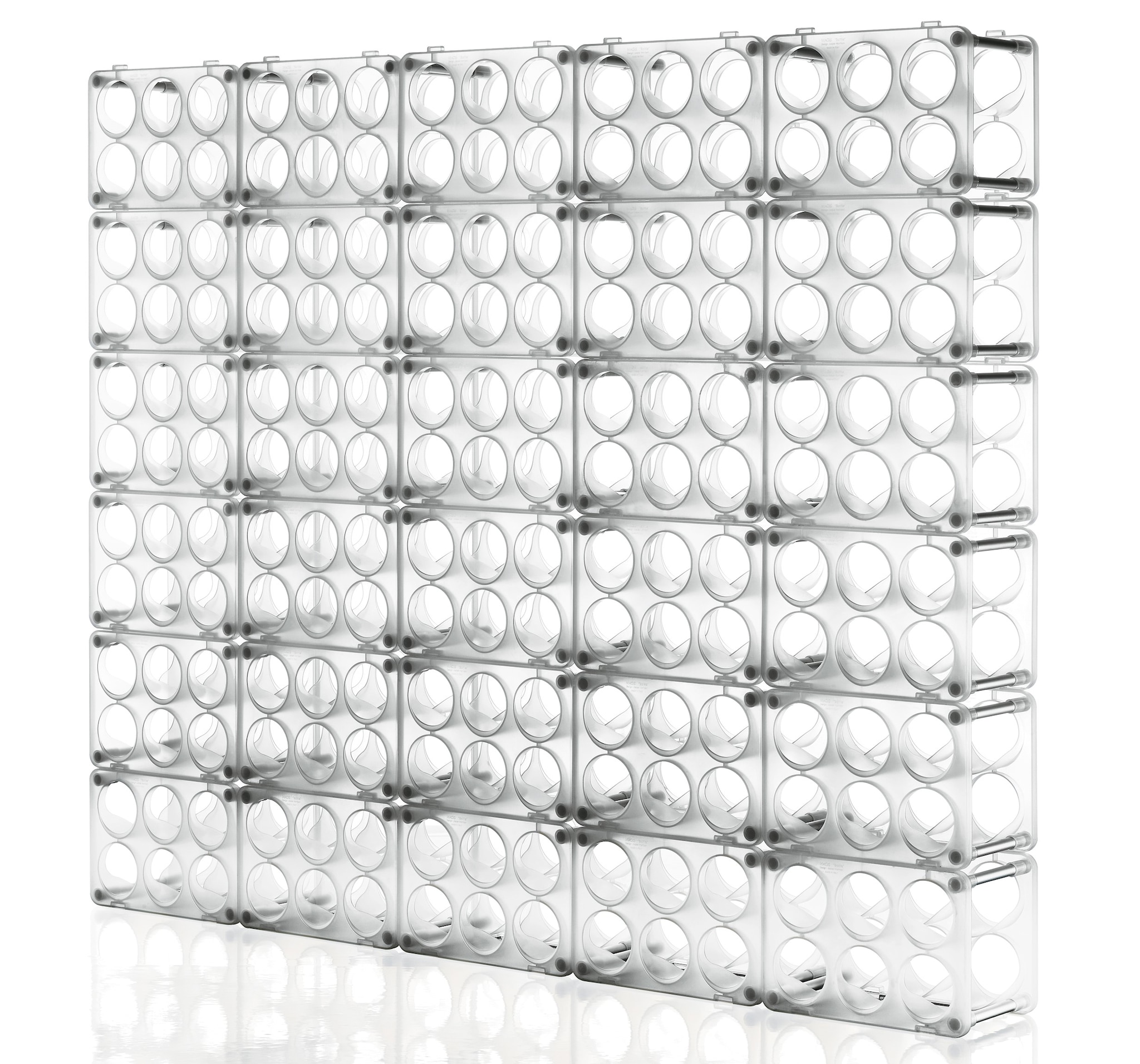
In a context that brought the design sphere towards the field of communication, brand, and identity, Jasper Morrison’s work, especially in the 1990s in which his position was consolidated, represented a reaffirmation of the fundamental concept of industrial design. It started from an idea, a response to a functional question, and then worked within the scope of anonymity, of the “‘design by’ minimal tools, but capable of living in our basements and our closets.” The bottle rack for Magis is the first plastic object by Morrison. It was inspired by the crates for the transportation of the bottles, which he declared to be his “most copied design, absorbed by the industry to become a new archetype, which kind of thievery can only be taken as a compliment.”
Opening image: courtesy Magis
29
Amazonia vase for Fish Design, 1995
Gaetano Pesce
Domus 776 November 1995
In the 1990s, during the Salone del Mobile, Domus had the chance to critically explore topics like the presence of plastic in the domestic spaces, rather than simply communicating the news of the moment, and Gaetano Pesce, chosen by Paola Antonelli, stood out once again in an innovation of surprises. Pesce created a company that worked plastic with well-known and unspecialized technologies and entrusted the workers (production took place in Mexico) the management of the casting of a soft stretchy resin in mold, negating the complicating technologies of design and the static nature of decorative objects. Each one of the vases is surprisingly unique to the touch.
Opening image: from Domus 776 November 1995
30
Wireless, lamps, 1996
Andrea Branzi
Domus 784 July 1996
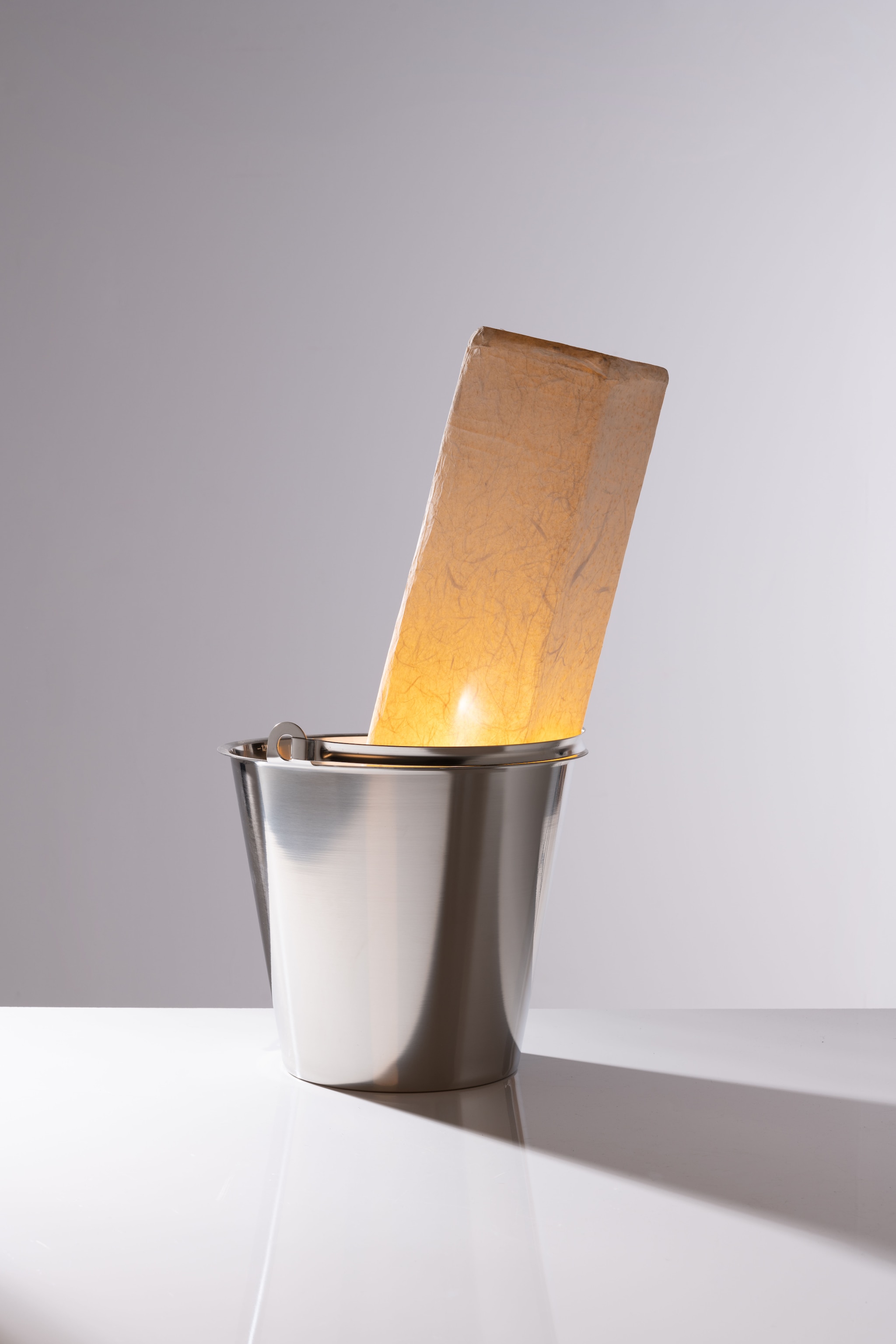
As all the projects and events external to the fair grew part of the Salone del Mobile, even exhibitions, limited collections, and unique pieces also became precious chances of reflection to raise the bar of awareness on what were often considered general aspect of design. Wireless was one of these exhibitions, set up by Andrea Branzi at the Design Gallery. It consisted in wireless lamps placed in complete freedom, in which materials that contrasted the immateriality of the time like wood, rice paper, bamboo cane, Murano glass, and synthetic fibers like Dacron were combined into objects and questioned how the new acquired freedoms were being utilized.
Opening image: from Domus 784 November 1996
31
Mayday, lamp, 1998
Konstantin Grcic
Domus 806 July 1998
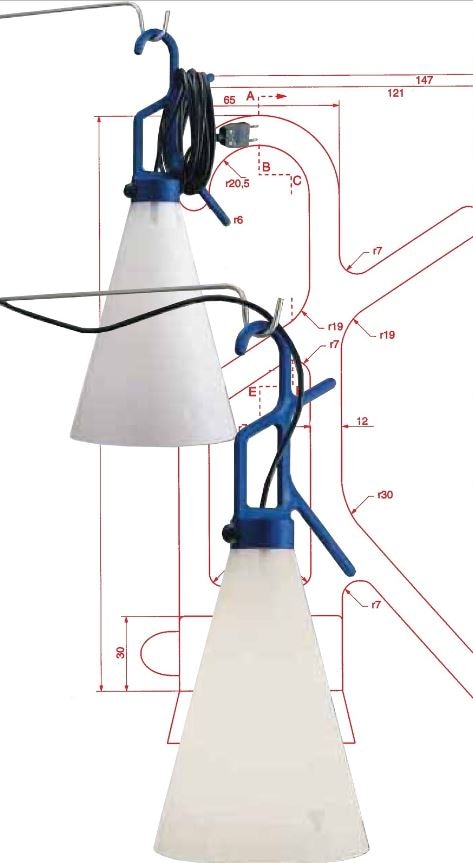
Mayday is the lamp that, in the years of digital dematerialization and design conceived as a language, better represents the approach of a company – Flos, which presented the Diabolo lamp by Castiglioni at the 1998 Salone del Mobile – and above all of a designer, Grcic, who, starting from a functional theme, rediscussed the totality of the assumptions on home spaces. With a big plastic hook-shaped handle, a five-meter-long cable, a truncated-conical polypropene diffuser, inspired by workshop lamps, Mayday is a work and ambience lamp, that can be functional both in the garage and in the living room, that can be hung or placed on a table or on the floor. It won the Compasso d’Oro in 2011.
Opening image: from Domus 806 November 1998
32
Caadre, mirror, 1998
Philippe Starck
Domus 806 July 1998
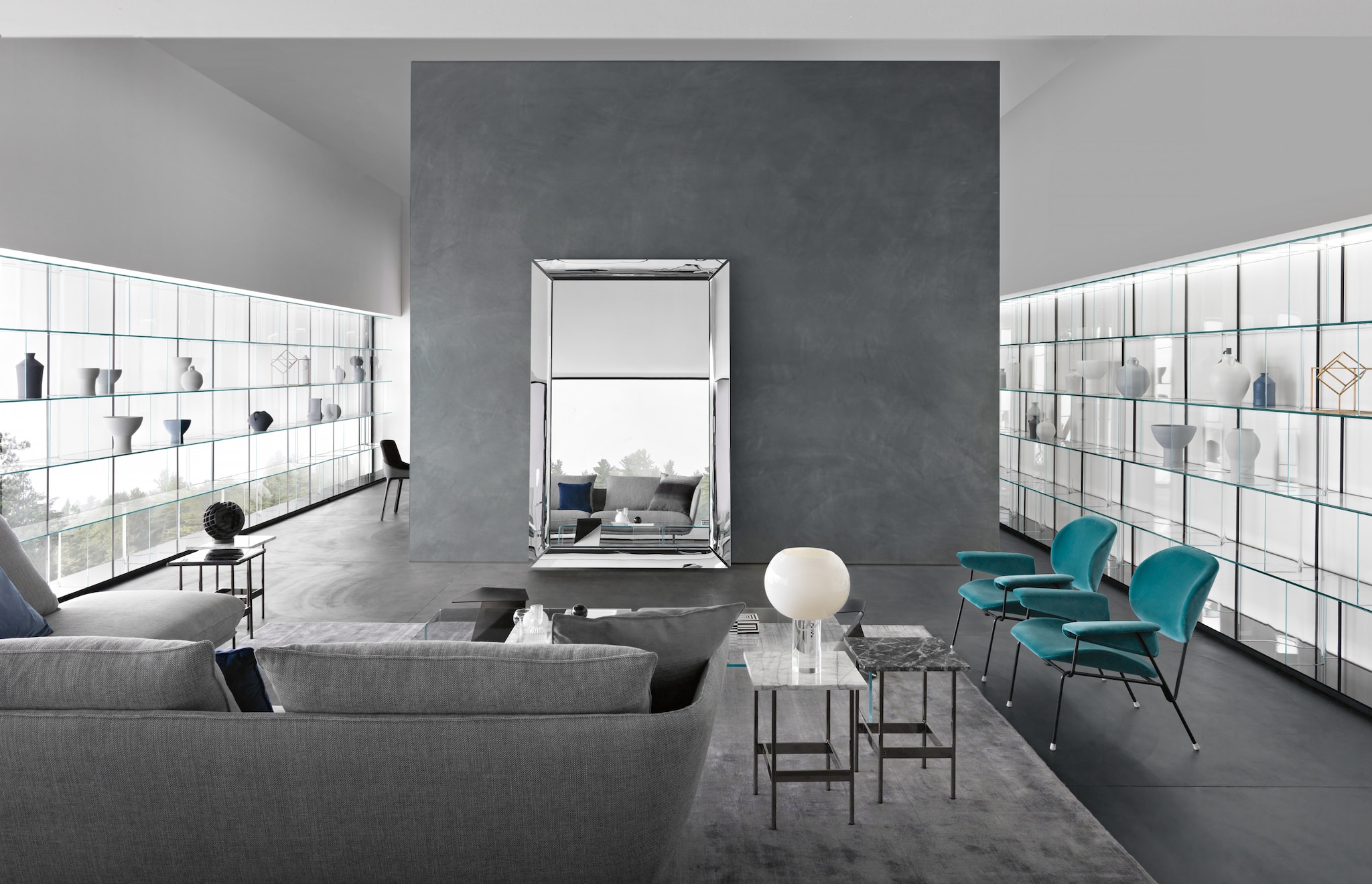
The mirror produced by Fiam represented a Starck that had already been consolidated as a star of design who expressed himself in signature designs, traits that are recognizable as his alone, and that without fail deconstructed the fundamentals of all typologies: in this piece the idea of a mirror hung like a frame is lost, the mirror is a curved extension of the reflective surface in silvered crystal. The object was designed to lay on the floor, leaning against a wall, and can be decorated with engravings, can be colored, or integrated with a light, a candle, a flower holder, a clothes hanger, or shelves.
Opening image: courtesy Fiam
33
Xenia, folding screen, 1999
Thomas Kühl
Domus 817 July 1999
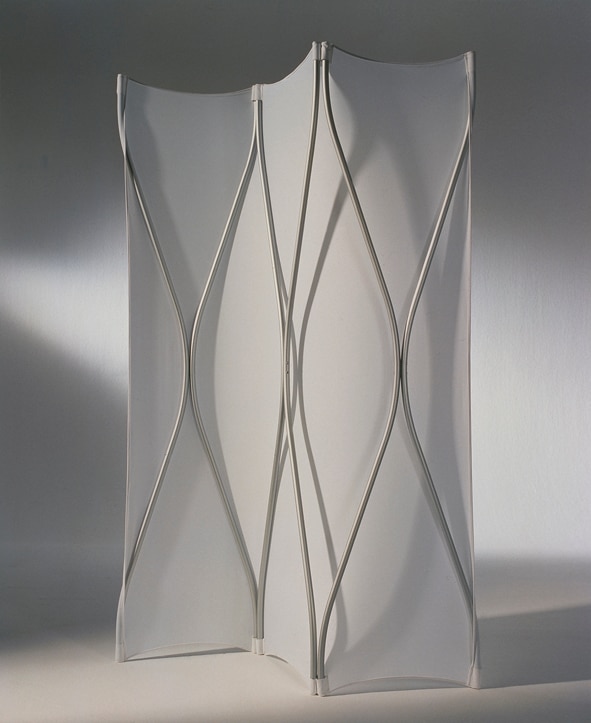
“I live and work in the same room. I sit at the computer, I need a screen to protect me from direct sunlight. Once I finish working, my home office must disappear into the room background.” The words of Xenia’s young designer precisely summarize the double innovation of this folding screen produced by Schopenhauer: experimenting with shape retention and material properties (metal in compression, stretched technical fabric in tension) and, above all, responding to a completely new way of living, that of the digital years, when the unambiguous correspondence between life, work, sociality, and their dedicated spaces is broken.
Opening image: courtesy Thomas Kühl
34
Z.Scape, sofa, 2000
Zaha Hadid
Domus 827 June 2000
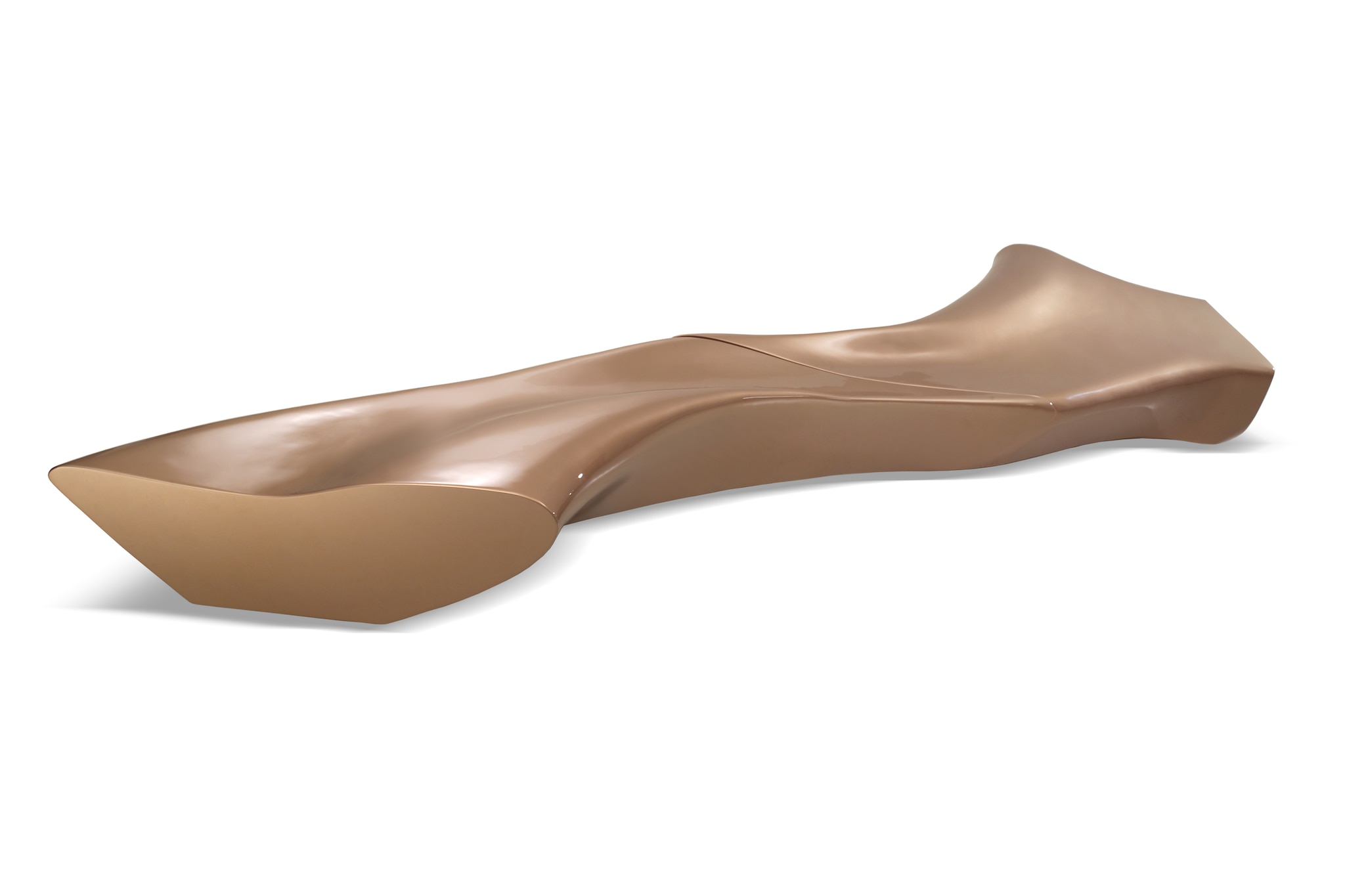
As in architecture, Hadid’s work represented a completely alternative vision of a project in design as well. That’s what he does with Z.Scape, a system developed for Sawaya & Moroni, inspired by how terrestrial landscape form. Z.Scape is a theoretical solid 5x2.5m in which four elements are carved, two tables and two sofas, and tells the story of the debut of parametric design in the world of furniture, of the possibility of a complete software control on the final shape of the object and its production, as in the two element of the sofa, Glacier and Moraine, which were prototyped as monoliths in polyurethane foam for the Salone del Mobile.
Opening image: courtesy Zaha Hadid Architects
35
Agaricon, lamp, 2000
Ross Lovegrove
Domus 827 June 2000
Out of the trends of the beginning of the millennium, the lamp by the Welsh for Luceplan explored new technologies and materials and their expressive and interactive possibilities. Designed like an artificial mushroom in polycarbonate with a light source inside, Agaricon recreates the translucency of mineral water bottles with its material transparency, while the brightness can be regulated by touching the tactile and thermosensitive ring around the rim. “In this way,” said Lovegrove to Domus, “in a physical sense, this piece ultimately reveals an odd ambiguity, showing both the proportions of a mushrooms and the transparency of a jellyfish.”
Opening image: from Domus 827 June 2000
36
Flap, sofa, 2000
Francesco Binfarè
Domus 827 June 2000
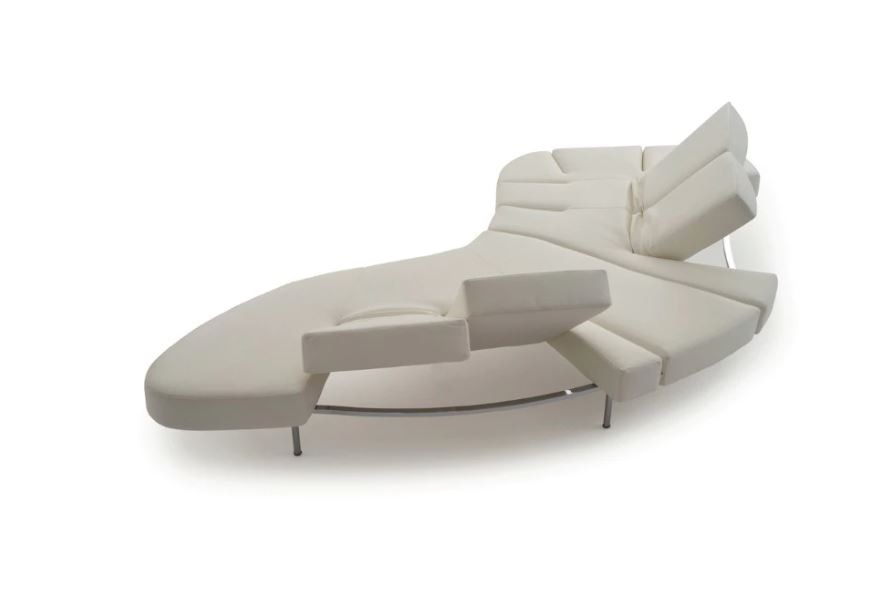
“Sensitivity prevails over wood and metal, analog and digital. An anonymous graffiti around the streets of the old town in Milan read: ‘Life follows sincerity, form follows nothing’.” The words with which Juli Capella introduced Domus’s report at the 2000 Salone del Mobile perfectly described the creative relationship between Edra and Binfaré, who was called in 1992 by Morozzi for a collaboration that generated projects that were always driven by the sensation and invention of the situations. Flap has a chromated steel structure that lays on an original idea of a sofa, where the backrests and the armrests rise and fall like petals, negating the concept of front and back, othogonality, and all predefined positions.
37
Chair_one, chair, 2002
Konstantin Grcic
Domus 847 April 2002
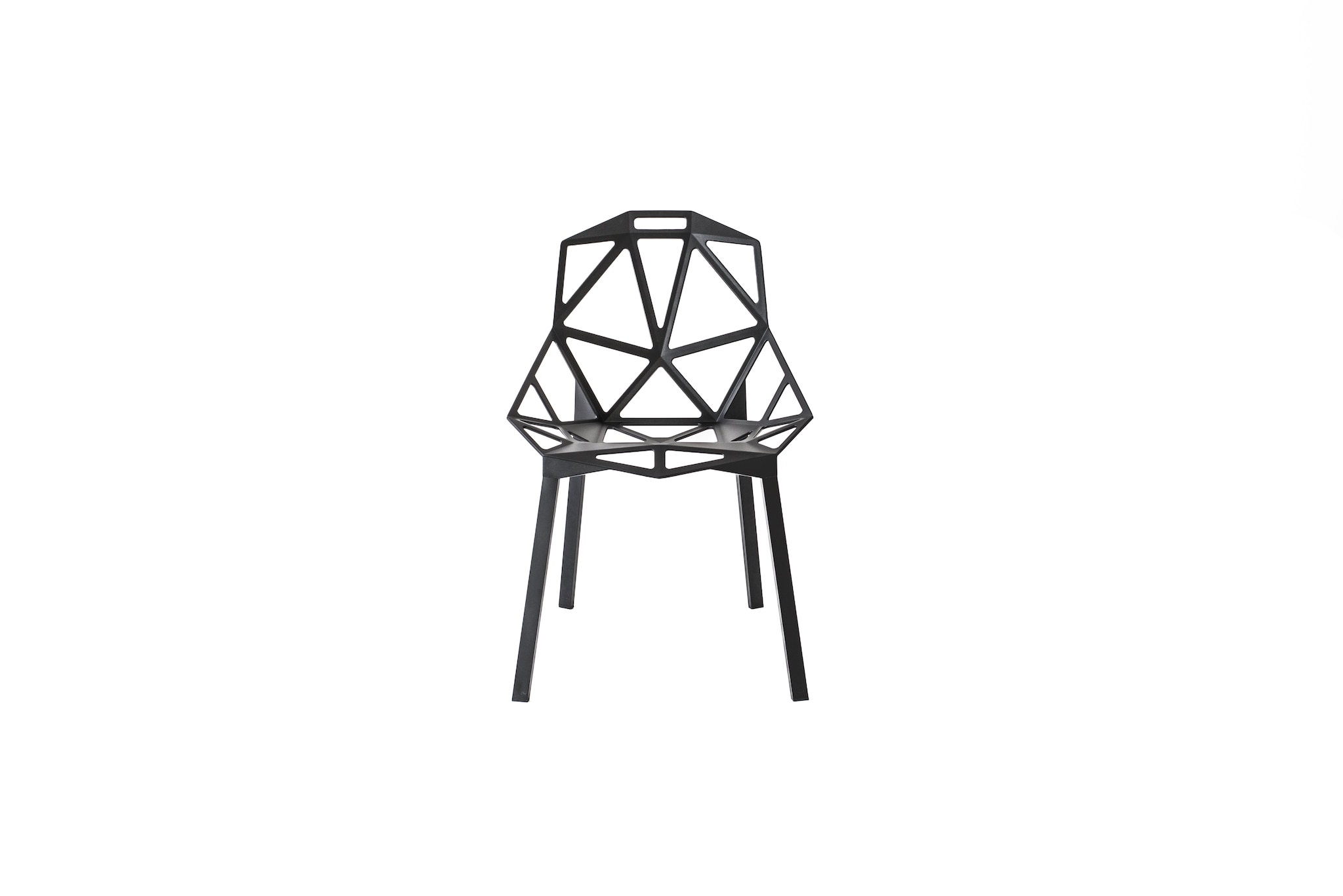
At the 2002 Salone del Mobile, Domus dedicated a series of events in which different designers discussed various topics. Among them, there was a K.Grcic who was going through a phase in which he distanced himself greatly from anonymous design, which had fascinated and inspired him in his early productions, and was now getting “interested in a more formal complexity.” The Chair_one chair was another instant icon and it was designed in die-cast aluminum for Magic, which usually worked with plastic: it was conceived as an enveloping structure that guarantees both comfort and sturdiness and was developed by constantly referencing the virtual and the physical model to reach the perfect shape; it rests on a cement foot or on four aluminum legs.
Opening image: courtesy Magis
38
Fiat Panda Alessi, 2004
Stefano Giovannoni
Domus 869 April 2004
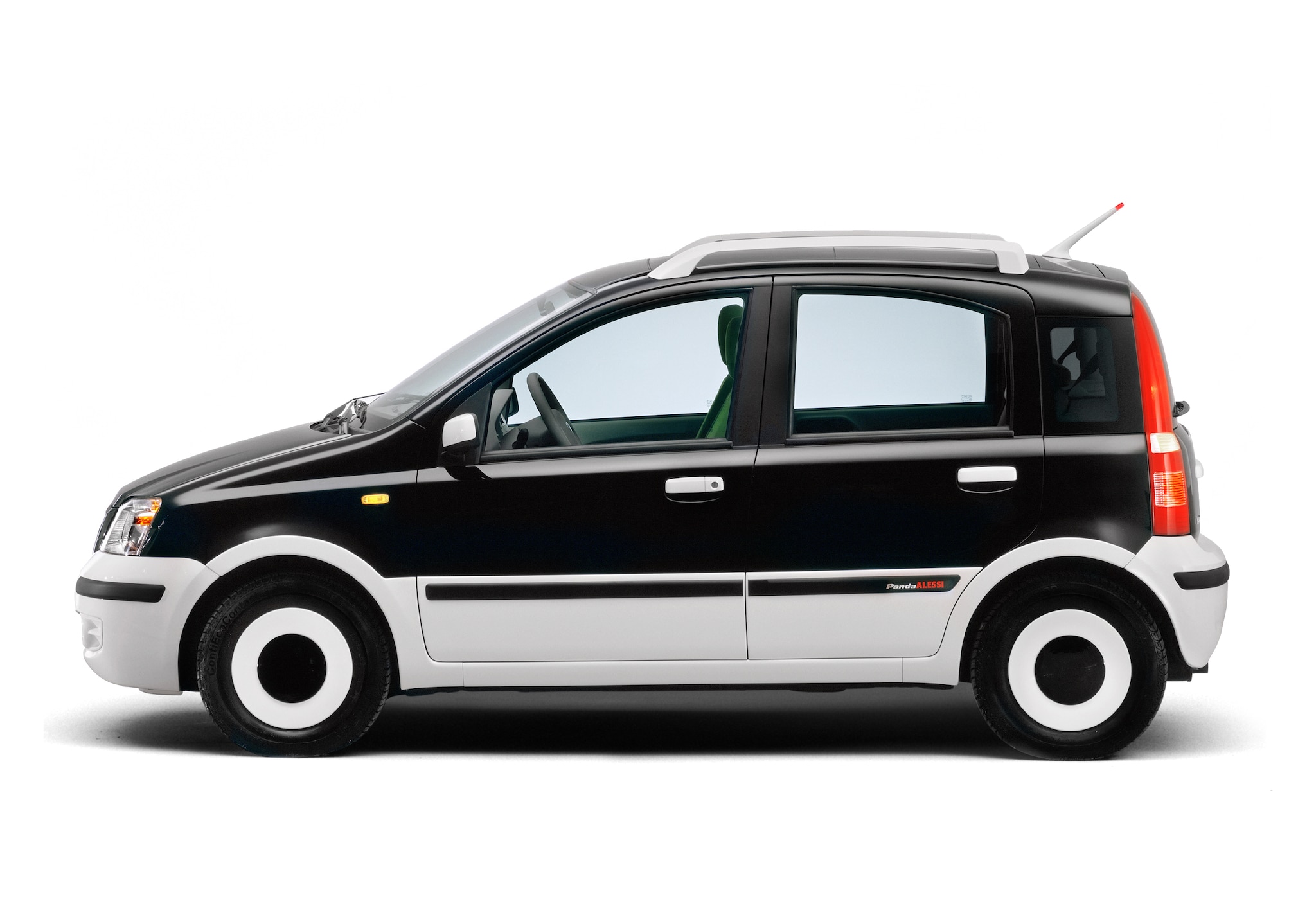
Domus’s big reflection in 2004 welcomed The world of the objects, the people and above all the new meanings that gave it shape: those were years in which the brand acquired a primary identity value and the glue capable of stretching between different fields and keeping them together, like in the co-branding project that thanks to Giovannoni brought the industry of automotive and product design together and gave an Alessi identity to the new Panda. An aesthetic project, in which the visual elements – wheel rims, color palettes, mirrors and the tunnel inside, and the containers – built this alternative identity, with the idea of expanding the pool of reference of both partners.
Opening image: courtesy Giovannoni Design
39
Circle, sofa, 2005
UNStudio/Ben Van Berkel
Domus 884 September 2005
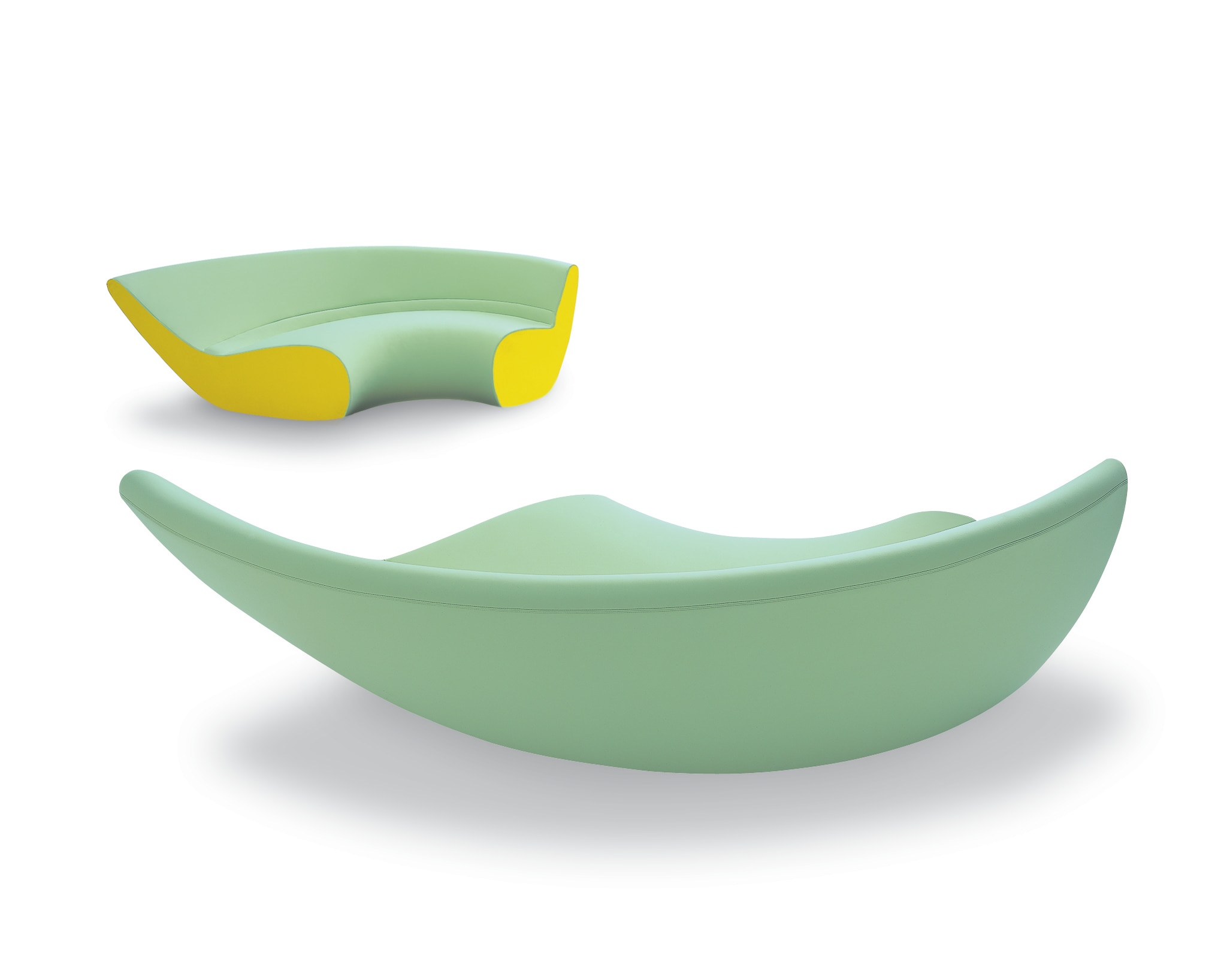
To close the circle, and not only metaphorically, of the 90s and 2000s parametric season of furniture design, there is the system of monolithic circular arcs designed by Van Berkel’s studio for Walter Knoll – which are continuous in the height of the backrest but varied in its depth – that can be assembled into different combinations that create a variety of situations and dynamisms. Even though the Domus’s review opened with an essay on “architecture, disability, and fear,” it was the report on shape and emotion to dominate the scene and the market in a time where social issues and formal instances continue to coexist on parallel planes.
Opening image: Courtesy of Walter Knoll. Photo enne Ochs
40
Cookit, Kit Open Source for a solar kitchen, starting from the 1970s
Roger Bernard et al.
Domus 891 April 2006
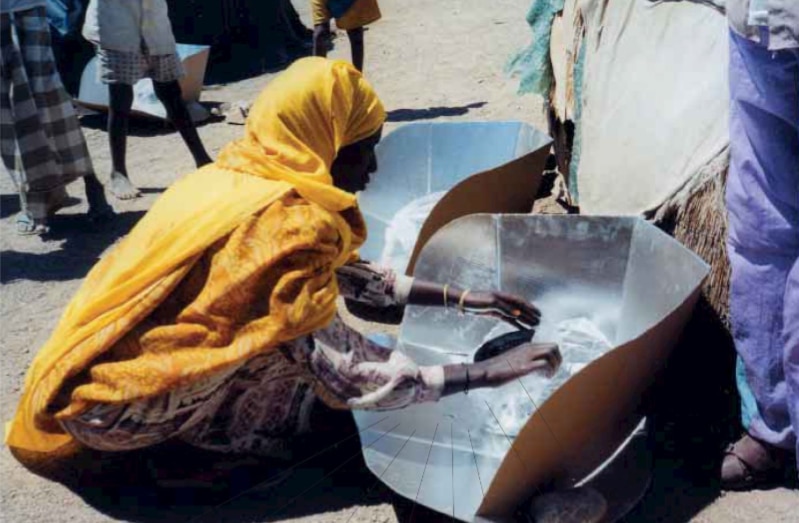
Geo-design. “Wondering where, how, and why complex objects are designed.” There were increasingly evident issues that, due to their global nature, become priority, such as scarcity of many primary energy sources and the importance of renewable energy sources. In Domus’s pages there was not a catalog object as it was common to see at that time during the Salone del Mobile but a catalog object in the most radical sense of the term: a system of mirroring surfaces that gathered the sunrays and used them to cook. It was experimented starting from the 1970, formalized as a project in 1987 by the physical Roger Bernard, and then developed throughout the years with the contribution of countless NGOs, companies, and users, forgetting its original designer along the way until becoming a globally spread object, completely open source, whose institutions can be easily found online as well.
Opening image: from Domus 891 April 2006
41
Domestic Shell, partition for interiors, 2006
Erwan and Ronan Bouroullec
Domus 891 April 2006
The Bouroullec brothers have studied a formation (rather than an object) such as rocky or marine ones, a self-supporting partition as it is made of single elements connected and solidarized, where size, shape, the number of elements and even their machine-cutting process are the result of a numerical process, of a software control. This experiment developed for Vitra is a new episode in the description of an innovated domestic realm, where it becomes necessary to subdivide, to screen the very spaces where one already lives, to respond to a hybridization of functions that is as much a result of global digitization as it is the form itself of this partition.
Opening Image: From Domus 891 April 2006
42
Antibodi, chaise longue, 2006
Patricia Urquiola
Domus 892 May 2006
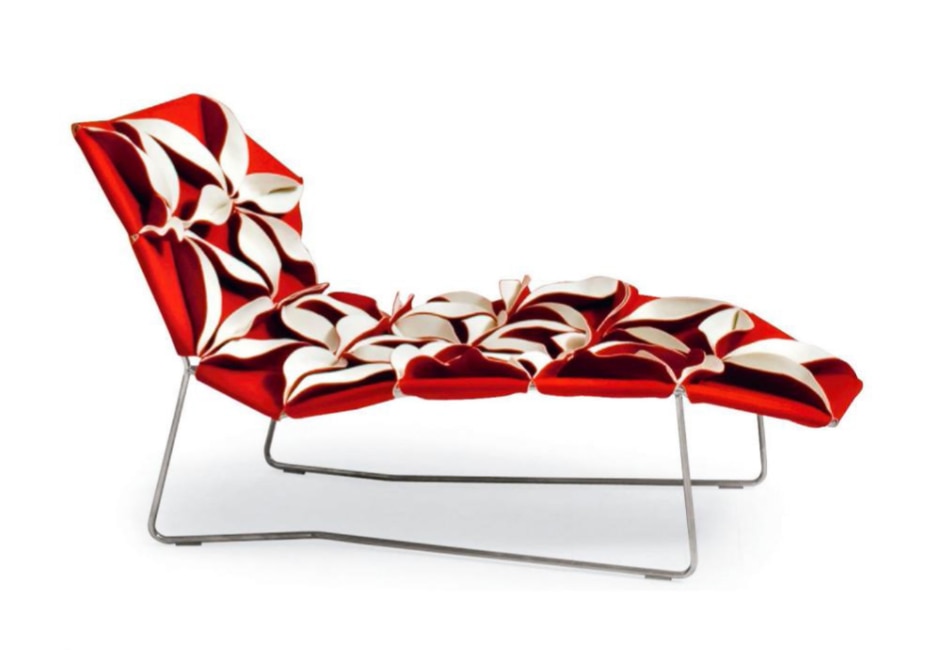
The 2000s have also been the years of a return to a lighter, almost serene relationship with decoration, as well as a reconsideration of retro as a language that could blend well with technological innovation. For Domus, 2006 has also been the year when a very special correspondent, Gillo Dorfles, dived deep into Salone and Fuorisalone aiming to map the state of the art for design. As visiting the Fair, Dorfles would declare himself rather uncomfortable sitting on the 3D cloth flowers covering the chaise longue created for Moroso by Patricia Urquiola, a designer who would nonetheless result being praised by the critic, and who, with Antibodi, declared open the golden age of the coexistence of decoration and technology.
Opening image: from Domus 1000 March 2016
43
Myto, chair, 2008
Konstantin Grcic
Domus 913 April 2008
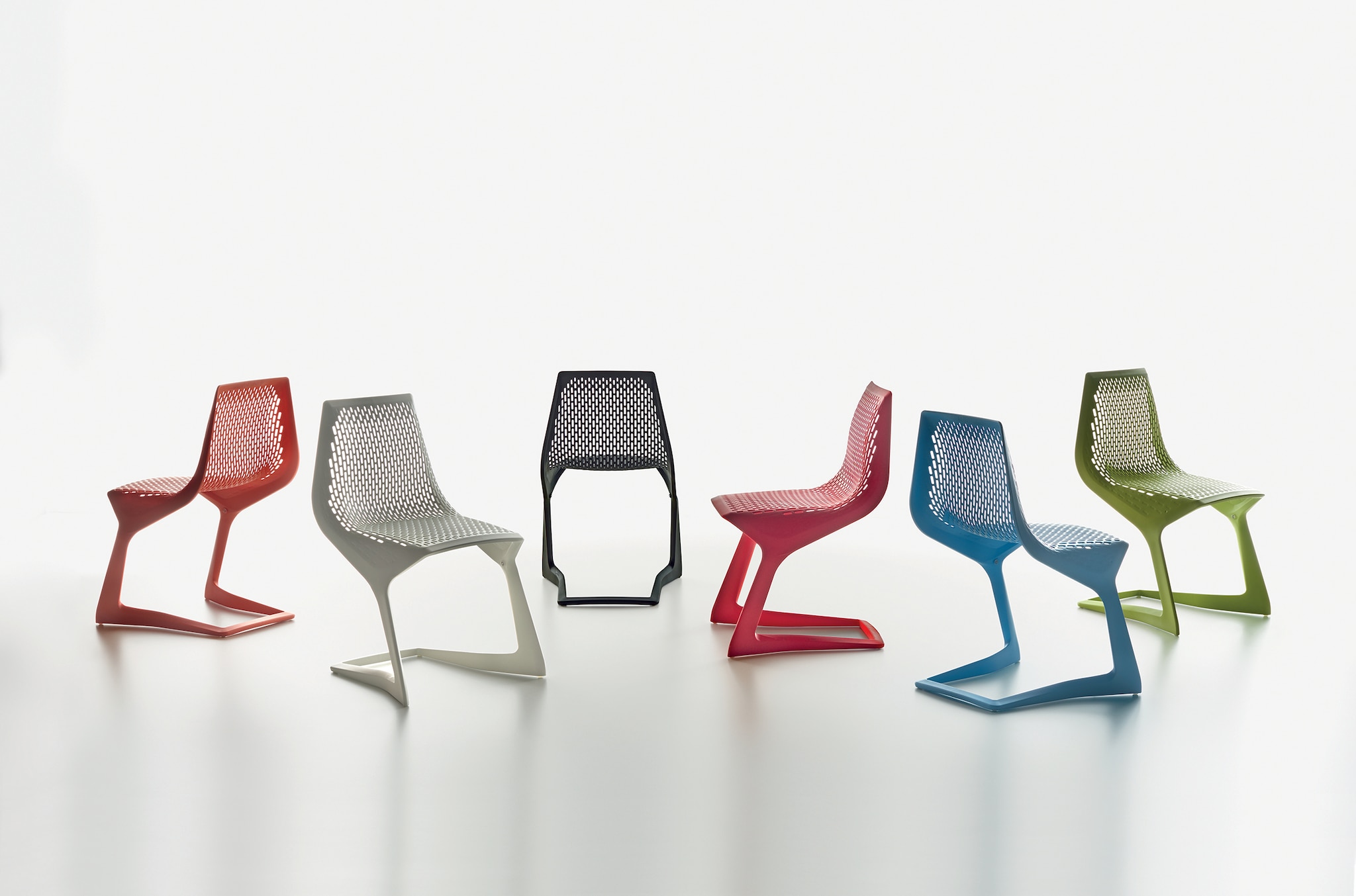
Grcic again, a Salone debut again, a Compasso d'Oro again. This chair, officially presented in Milan in 2008 for Plank, and then awarded in 2011 “for having solved the problem of structure and flexibility through an intelligent use of plastic material”, had been previewed in Düsseldorf for a trade fair rather foreign to the world of furniture, namely a plasticsfair: in fact, it was born out of a year-long collaboration with BASF on a specific plastic material, which made it possible to create a cantilevered plastic chair molded in one single block.
Opening image: courtesy Plank
44
Skin, seating system, 2008
Jean Nouvel
Domus 913 April 2008
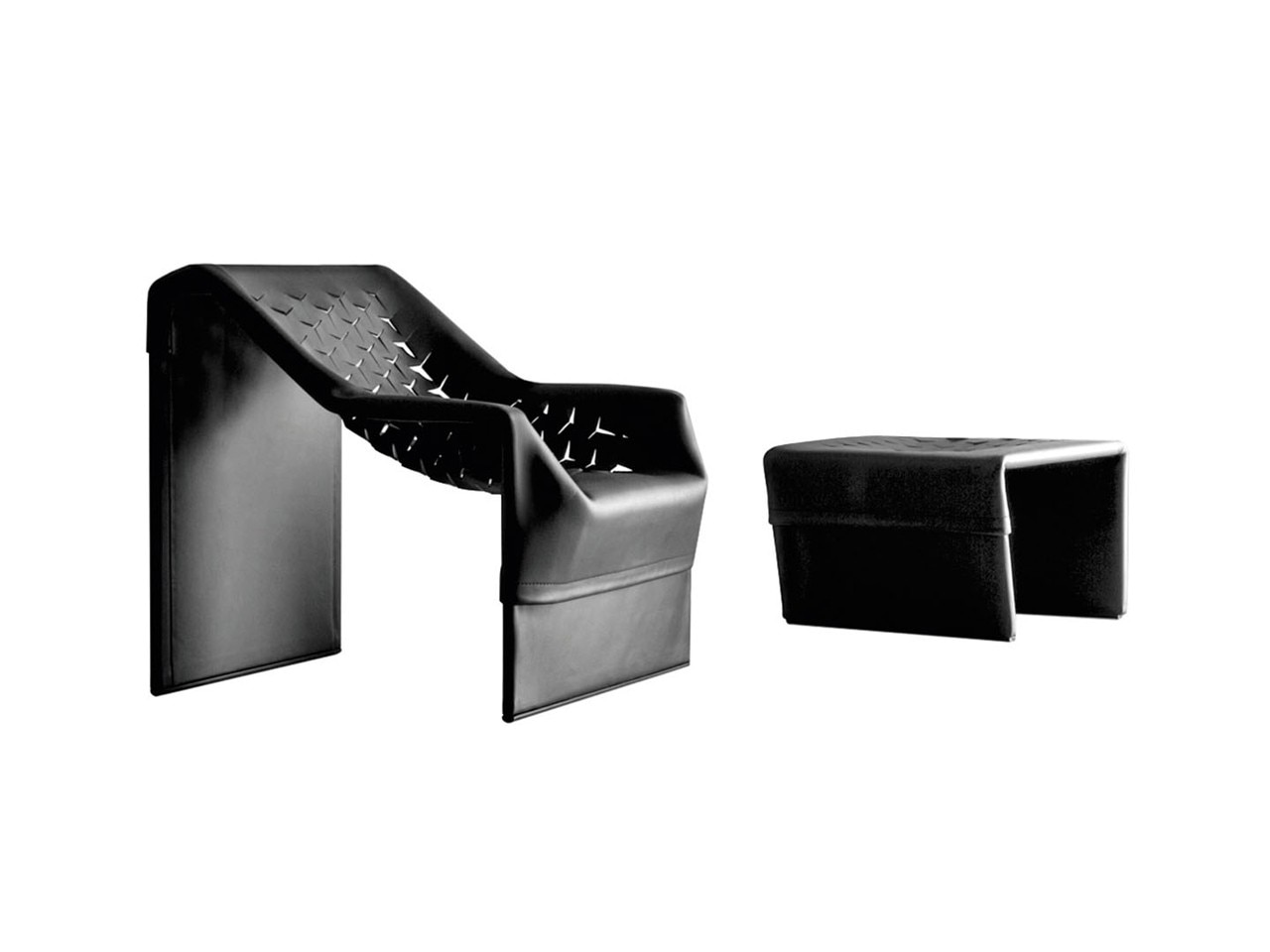
Architecture and design: a long, always complex, always unpredictable, often stormy relationship. But Jean Nouvel, when the time came to design the Skin sofa, armchair and pouf system for Molteni & C., could already rely on a 40-year career and an extensive catalog of what he calls “small architectures for interiors”, so he was no stranger to exploring this relationship: starting from the interior concept for the Musée du Quai Branly in Paris, he then pushed that research forward, conceiving furniture pieces that are partly structured, by a metal tubular frame, and partly self-supporting, thanks to their structural upholstery in leather or double-sided felt, with self-modeling geometric incisions.
Opening image: via molteni.it
45
Concrete Things, outdoor seating, 2009
Komplot
Domus 934 April 2009
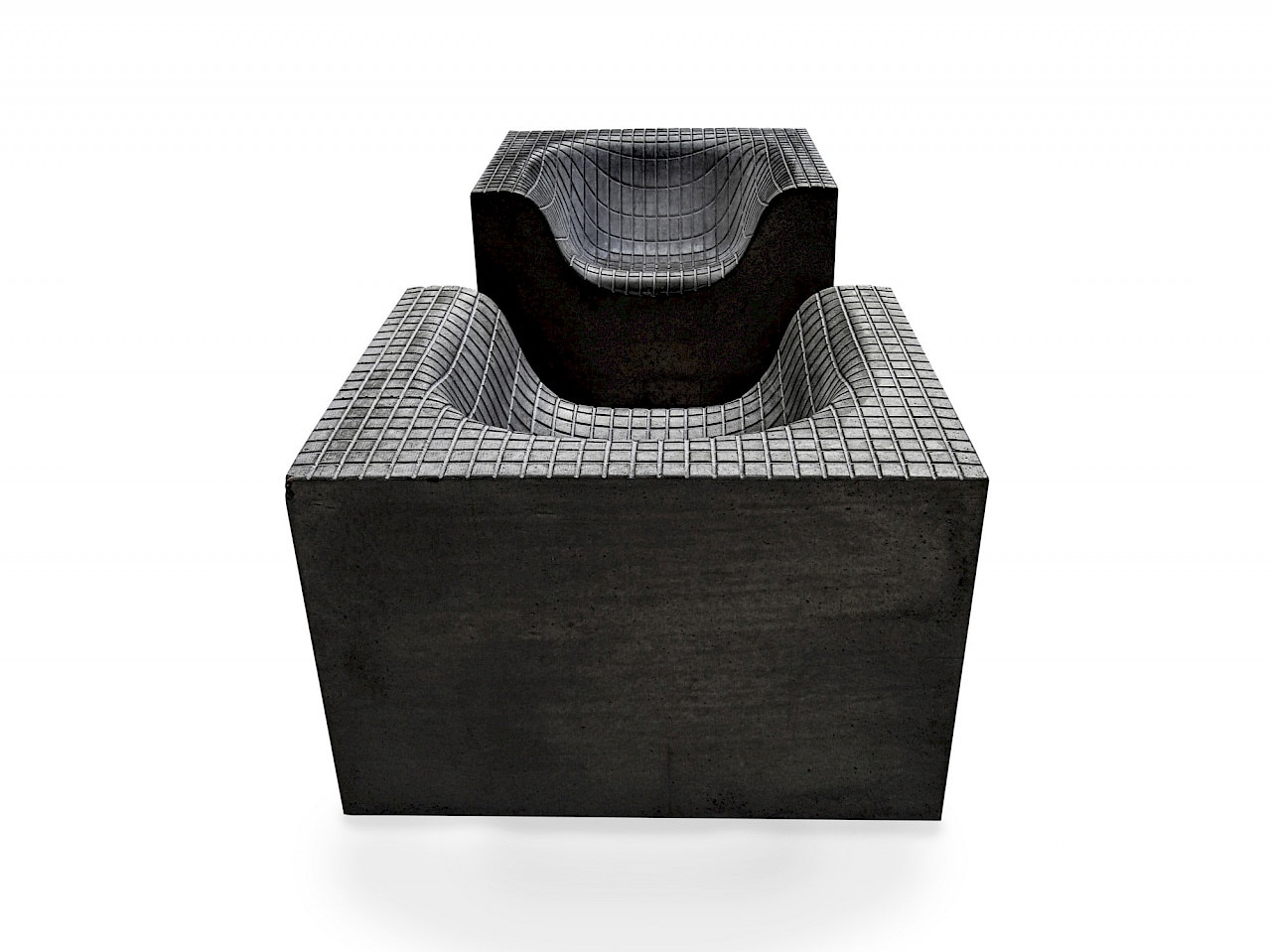
As, with the new millennium, the field of design has pushed the boundaries farther and farther, breaking away from the product sphere alone, even an object-based event such as the Salone has changed its form, following the mutations of its content. Objects started appearing, for instance, that represented actual critical discussions of issues such as the use of public space: a bit like Ugo La Pietra had done with his inclined planes moving around Milan, but in these new cases the chosen realm was the realm of catalog products. The concrete seats by Danish studio Komplot for Nola are meant to be placed in public open spaces, their shape is reminiscing the presence of a body, in a surface described by a deformed grid: materialized in metal, the grid itself becomes a seat, complementary to the corresponding monolithic concrete one.
Opening image: courtesy Komplot
46
Stelle filanti, lamp, 2013
Atelier Oï
Domus 970 June 2013
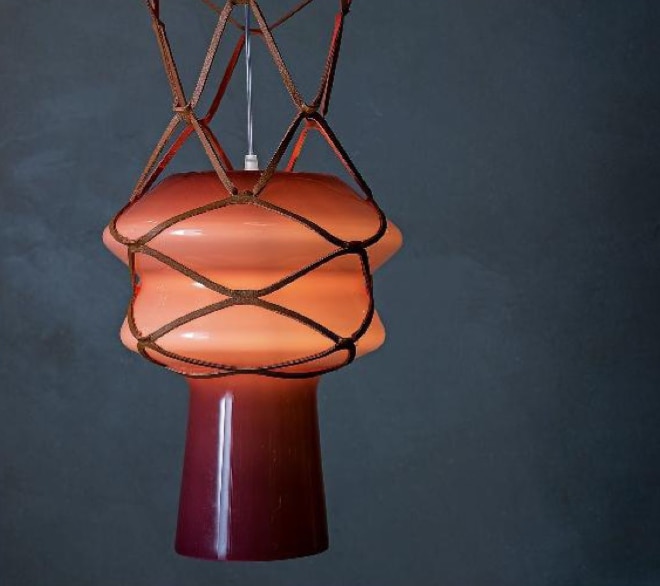
The word “craftsmanship” has also experienced a major comeback in the design discourse, especially in the 2010s, through relationships that have been from time to time different, in greater or lesser contrast, with the concept of “industrial production”.Swiss firm Atelier Oï, invested since the foundation in the interdisciplinary character of design, has partnered with one of the legendary names of Murano glass manufacturing, Venini, to propose a handcrafted blown-glass pendant lamp – lattimo combined with different types of glass – that is supported by a mesh made of thin leather bands creating a spatial structure, at once natural and design-sourced.
Opening Image: from Domus 970 June 2013
47
Tierras, tiles, 2014
Patricia Urquiola
Domus 983 September 2014
Tactility and chromatic character from the natural state of matter: in a word, materiality. A concept that has now returned to dominate contemporary interior philosophies, a change that Patricia Urquiola has interpreted by presenting at the 2014 Salone an earth-based collection – Tierras, precisely – for Mutina: tiles in eight sizes and six saturated and natural colors, recycled ceramics on which lavas, earth and terracotta are composed; but also a collection of terracotta latticeworks, modular components designed to create partitions, give depth and 3D-texture to vertical surfaces as well as to make shadow an architectural material.
Opening Image: from Domus 983 September 2014
48
Cell, seats/office
Dorigo Design (F. e M. Dorigo, L. Garbet)
Domus 991 May 2015
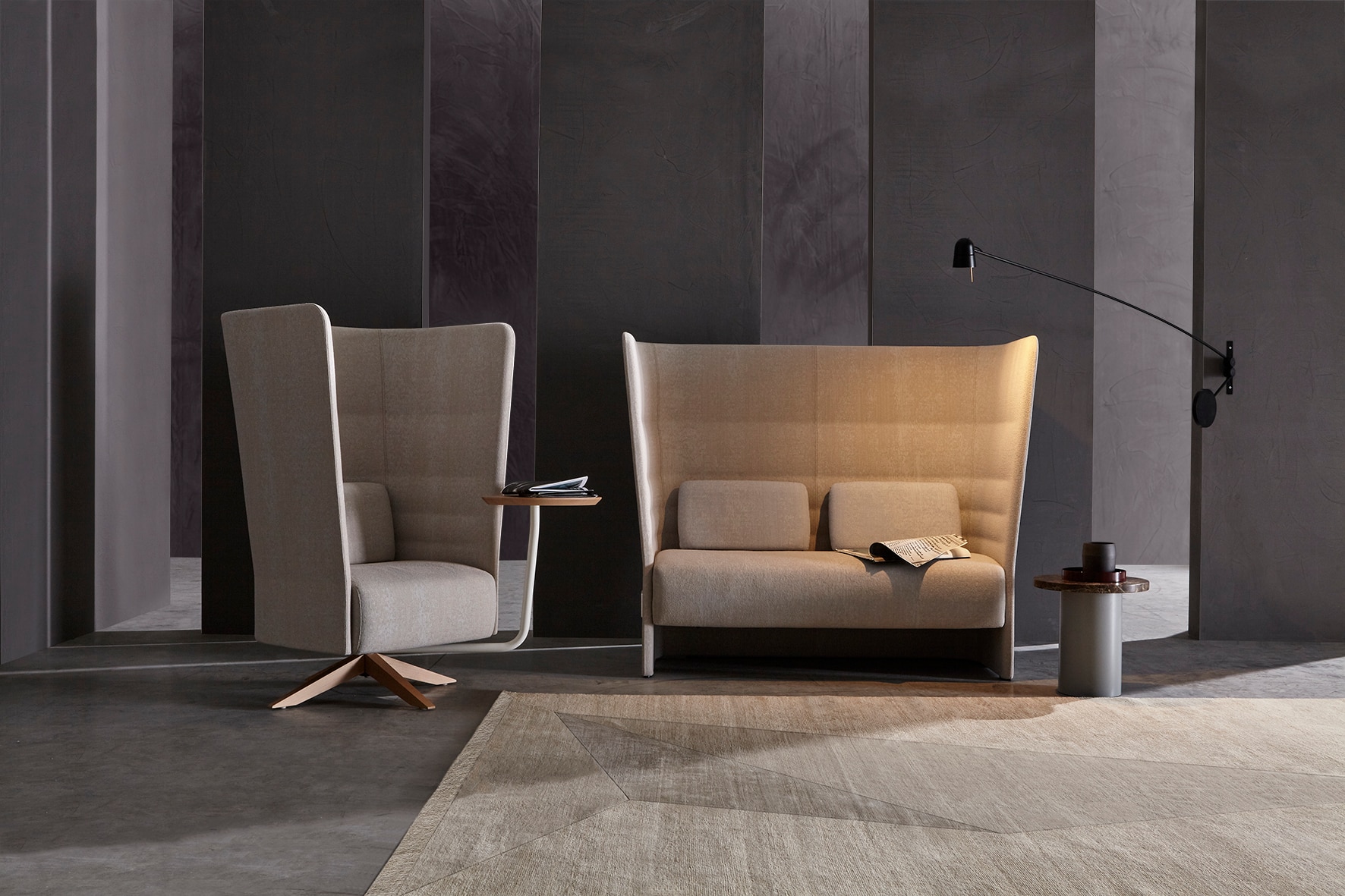
The furniture of 2010s responded to new buzzwords in interior design, such as coworking, embryonically smart working, the everlasting open space, and the finally widely accepted digital nomadism: all articulations of a workspace that was no longer seen as one, localized, defined and individual. In increasingly common hybrid landscapes such as coworking spaces, or transient ones such as hotel lobbies and convention centers, the space needed to find privacy, isolation, possibility to make calls and even think, often started coinciding with individual pieces of furniture, such as the high-backed armchairs and sofas in this collection produced by Sitland, combining polyurethane with an acoustic insulation to ensure privacy, flanked by other elements such as regular armchairs, ottomans, and conference chairs.
Opening image: courtesy Dorigo Design
49
Origami, radiator, 2016
Alberto Meda
Domus 1002 May2016
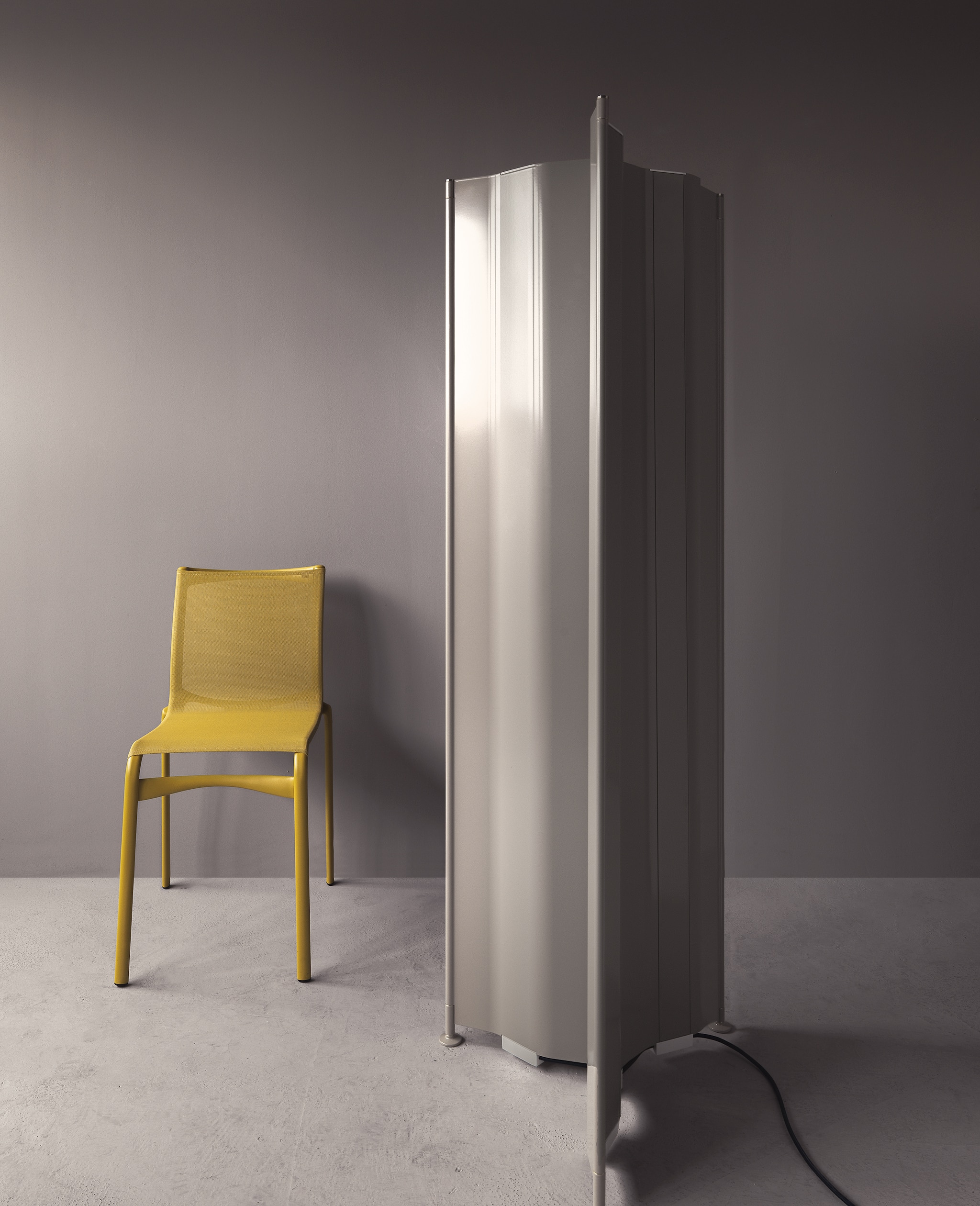
The logic is plug-and-play: produced by Tubes, Origami is an electric radiator that can take on different roles depending on its interaction with space. Vertical elements, connected by hinges and resting on metal pins on the floor, can form a heating screen, while a single folding element, mounted on the wall, can serve to wrap, heat and store towels. Yet another essay on the interaction between technological devices and living space, which won the Salone del Mobile.Milano Award as best object in the bathroom category the year of its presentation, and the Compasso d'Oro in 2018.
Opening image: courtesy Alberto Meda. Photo Max Zambelli
50
Wireline, lamp, 2019
Formafantasma
Domus 1035 May 2019
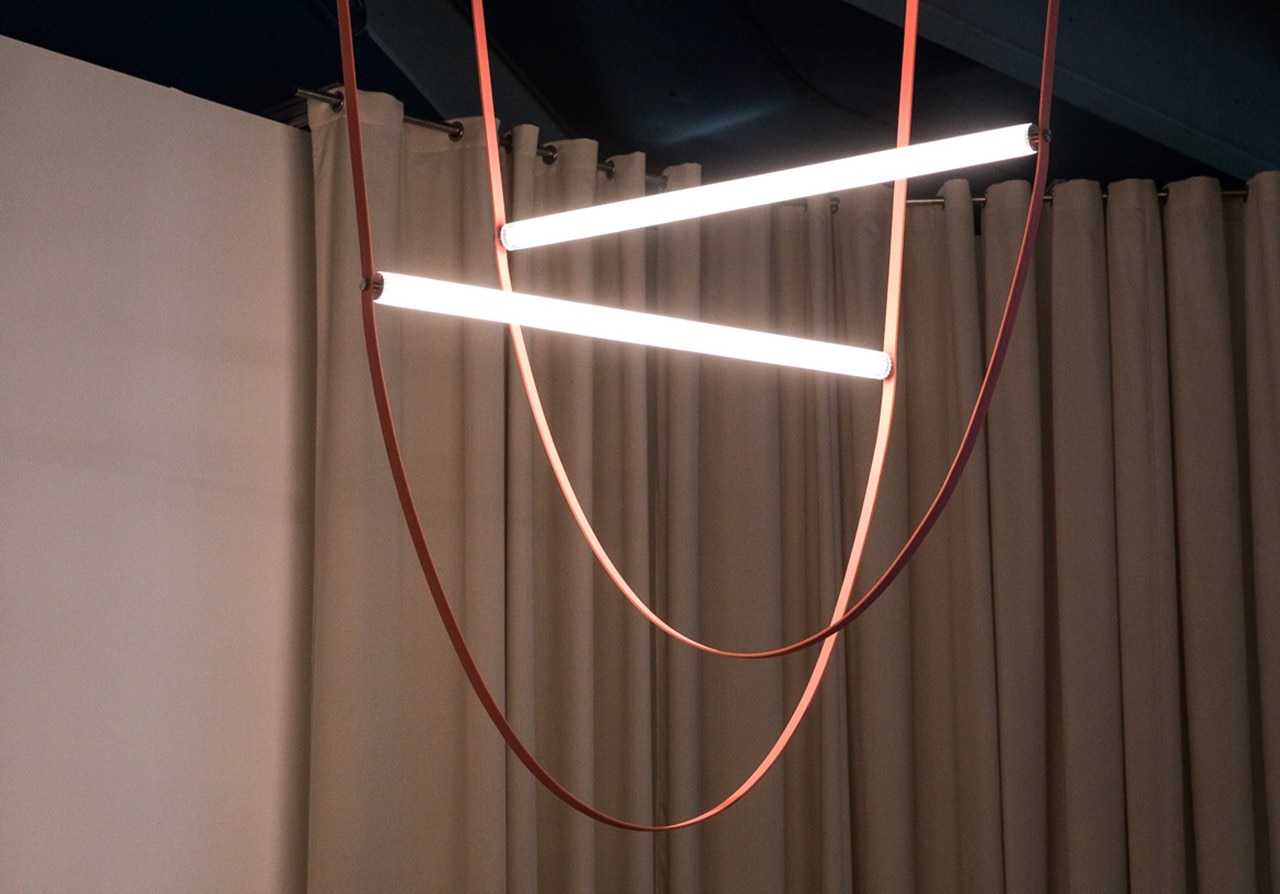
The Milanese duo has expanded their dialogue with Flos, beginning with the Wirering lamp, by extending it to public spaces in the key of what they call “technical minimalism”: a rarefaction and simplification of visible elements, requiring a high rate of engineering. The suspension is provided by an arched rubber band (containing the cable), while the light fixture is an almost abstract extruded glass tube. Brand and designers have found their common ground in speaking the language of an era, interpreting and shaping its lexicon into products that also aim to become instant icons.
Opening image: photo Henrik Blomqvist


